We awoke from a loud clanking of the railway tracks, our train speeding fast past the lush green landscape.
*This post may contain affiliate links, as a result, we may receive a small commission (at no extra cost to you) on any bookings/purchases you make through the links in this post. As an Amazon Associate, we earn from qualifying purchases. Read our full disclosure
“Arriving in 5 mins.” A woman’s head appeared in the door.
Half-asleep, we climbed out of our bunk beds, brushed our teeth, and grabbed our backpacks as the train pulled into the station.
Sapa awaited…
Despite the early morning arrival (it was barely 6am), Ha, the receptionist at the “Heart of Sapa” hotel greeted us with the utmost hospitality.
“Please make yourself at home.” Ha gestured towards a small dining room at the back of the reception. “We are preparing your room, it will be ready shortly. You can take some breakfast now, then have some rest and still have a full day to enjoy the beauty of Sapa.”
It sounded like the perfect way to begin our 3 days in Sapa.
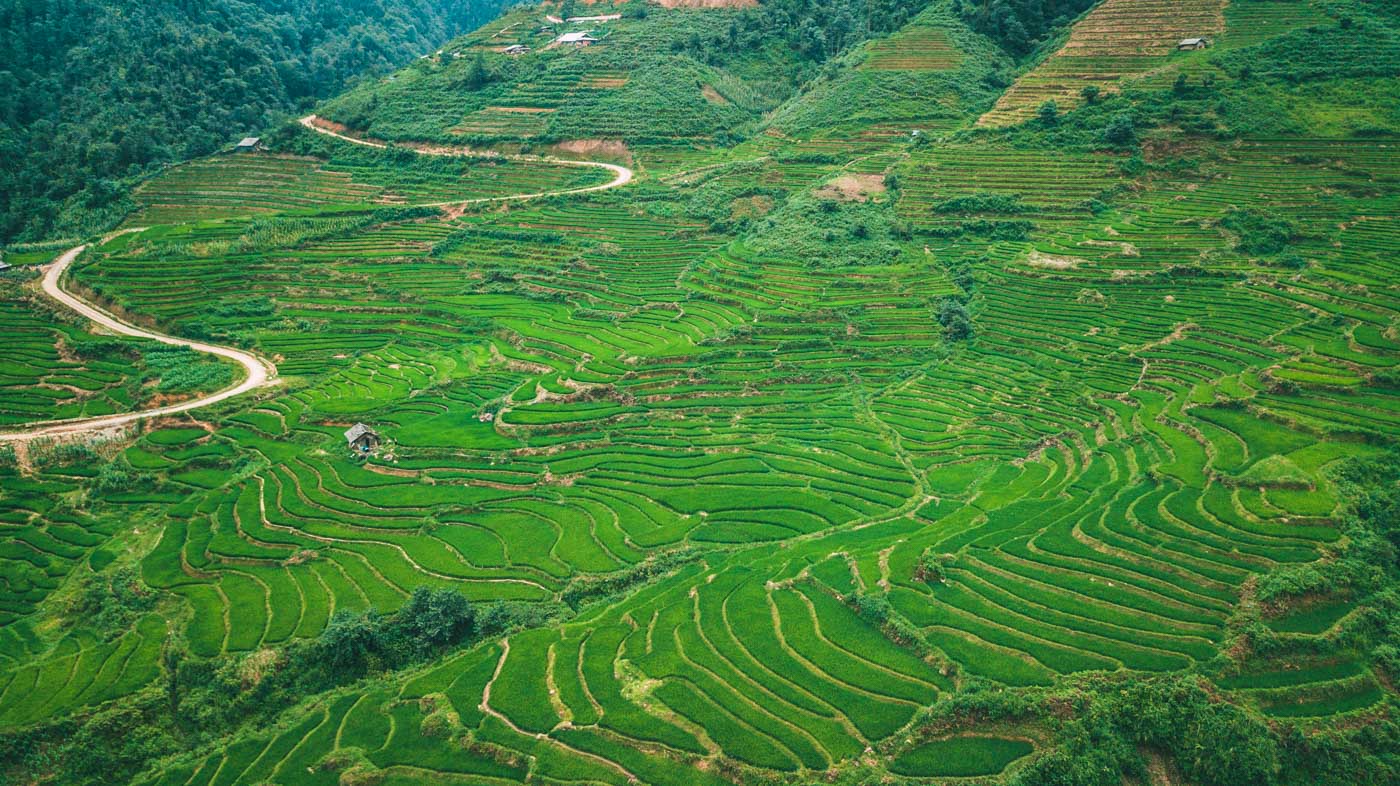
Traveling Soon? Here is a list of our favourite travel providers and accessories to help get you ready for your upcoming trip!
About Sapa, Vietnam
Located in the northwest region of Vietnam, Sapa is a popular trekking destination with a layered history. Also written as Sa Pa, this mountain town was a retreat for French colonial officials. Its cool weather and gorgeous scenery made for an ideal escape from the hot weather in the southern regions, and still do today.
Sapa is full of natural beauty to explore, and there are also plenty of opportunities to experience Vietnamese culture. If you plan to visit Vietnam, consider adding Sapa to your itinerary. You won’t be disappointed!
When To Visit Sapa
The weather in Sapa is consistently cool, and there really isn’t a bad time to visit. If you were to pick the best time, the spring (March-May) and fall seasons (September – November) are safe bets. Sapa’s rainy season runs from late spring to early fall, with peak rainfall happening in July and August.
Spring is a particularly good time for a Sapa trekking tour, with the fields renewed and bright green, plus new flower blooms in gardens and along trails. If you want to see the annual rice harvest, consider visiting Sapa between September and early October. At this time, the rice terraces have turned gold before the harvest, which photographs beautifully.
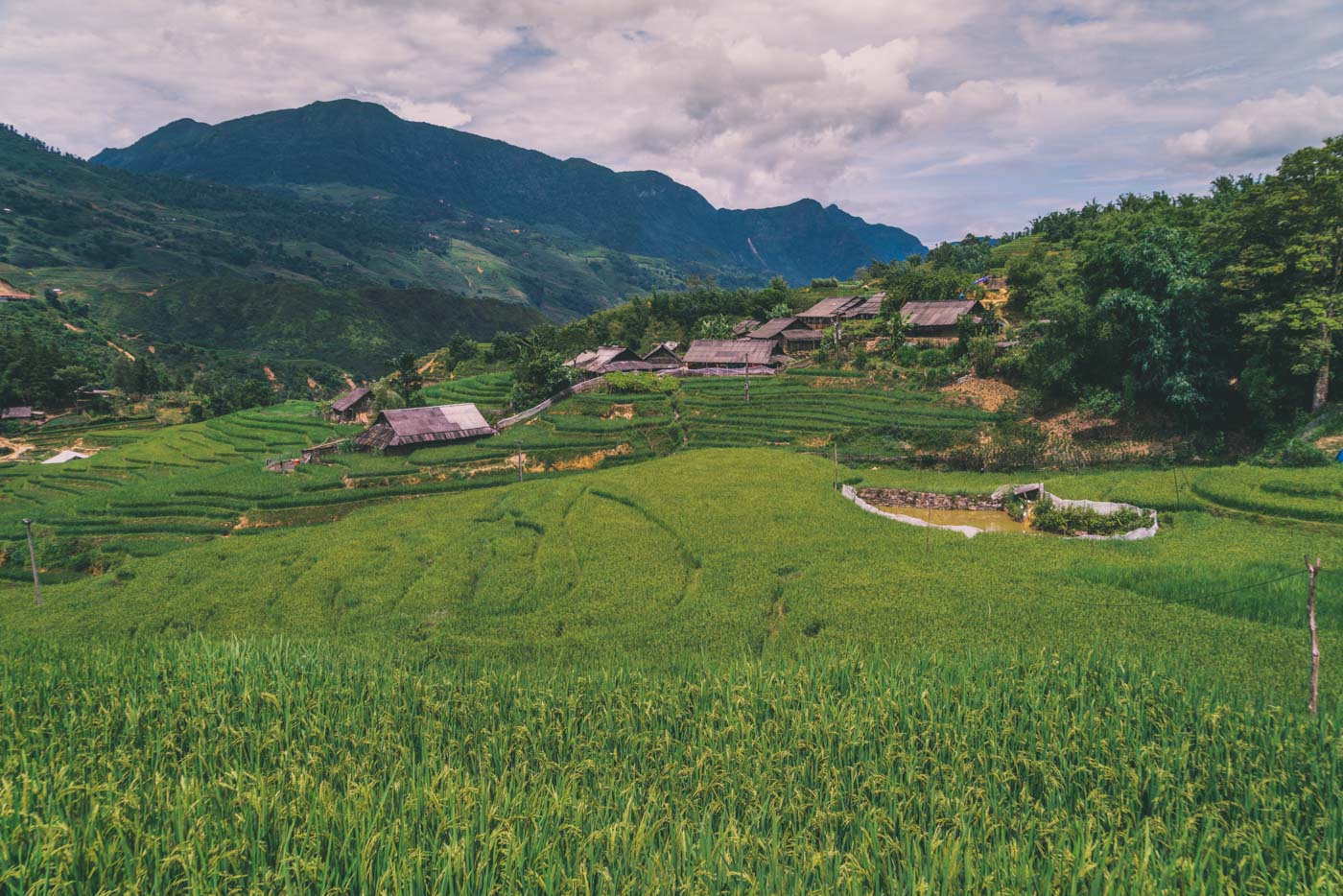
Day 1: Chasing Waterfalls And Scenic Lookouts
A few hours of sleep was all we needed, as our sense of adventure and desire to explore made us itchy to get out of our room. With Ha’s help (and the help of an opportunistic neighbour), our wheels and the accompanying helmets awaited us outside the hotel, and we were ready to get started on a full three-day Sapa trekking itinerary.
We never had to wonder what to do in Sapa, Vietnam, as Ha mapped out a perfect afternoon of adventure for us, including a visit to two waterfalls and time to explore the beautiful scenery of the Sapa Valley. If you want a more structured Sapa itinerary, there are great private treks and tours, such as this one that takes you on a day trip to hike to the waterfalls in the Sapa, Vietnam area.
The wind tousled our hair as we zoomed past the traffic and never-ending construction of Sapa town. Our first stop, the Silver Waterfall, was located just 12 kms (7.5 miles) outside of Sapa town. The waterfall was visible from the road, but we took the time to hike up the stairs to the top.
Our second stop that day was the Love Waterfall, located a few kms from the Silver Waterfall. Unlike the Silver Waterfall, Love Waterfall wasn’t located near the road and required an additional 15-20 mins hike through a lovely forest to reach the base. We hung out at the waterfall for a while, enjoying nature and the peaceful surroundings.
On the way back to Sapa, we made a point to stop along the road to enjoy the scenic views of the rice paddies below. Staring at these vistas was one of the best things to do in Sapa. The best views were, of course, reserved for those who wanted to take the time to go to the top of Mt. Fansipan.
On foot, this journey would take a few days, but luckily a new cable car system now allows visitors to reach the top in just 15 minutes, making this a perfect activity to combine with a visit to the falls, if you’re feeling lost for things to do while trekking Sapa.
The wind tousled our hair as we zoomed past the traffic and never-ending construction of Sapa town. Our first stop, the Silver Waterfall, was located just 12 kms (7.5 miles) outside of Sapa town. The waterfall was seen from the road, but we took the time to hike up the stairs to the top.
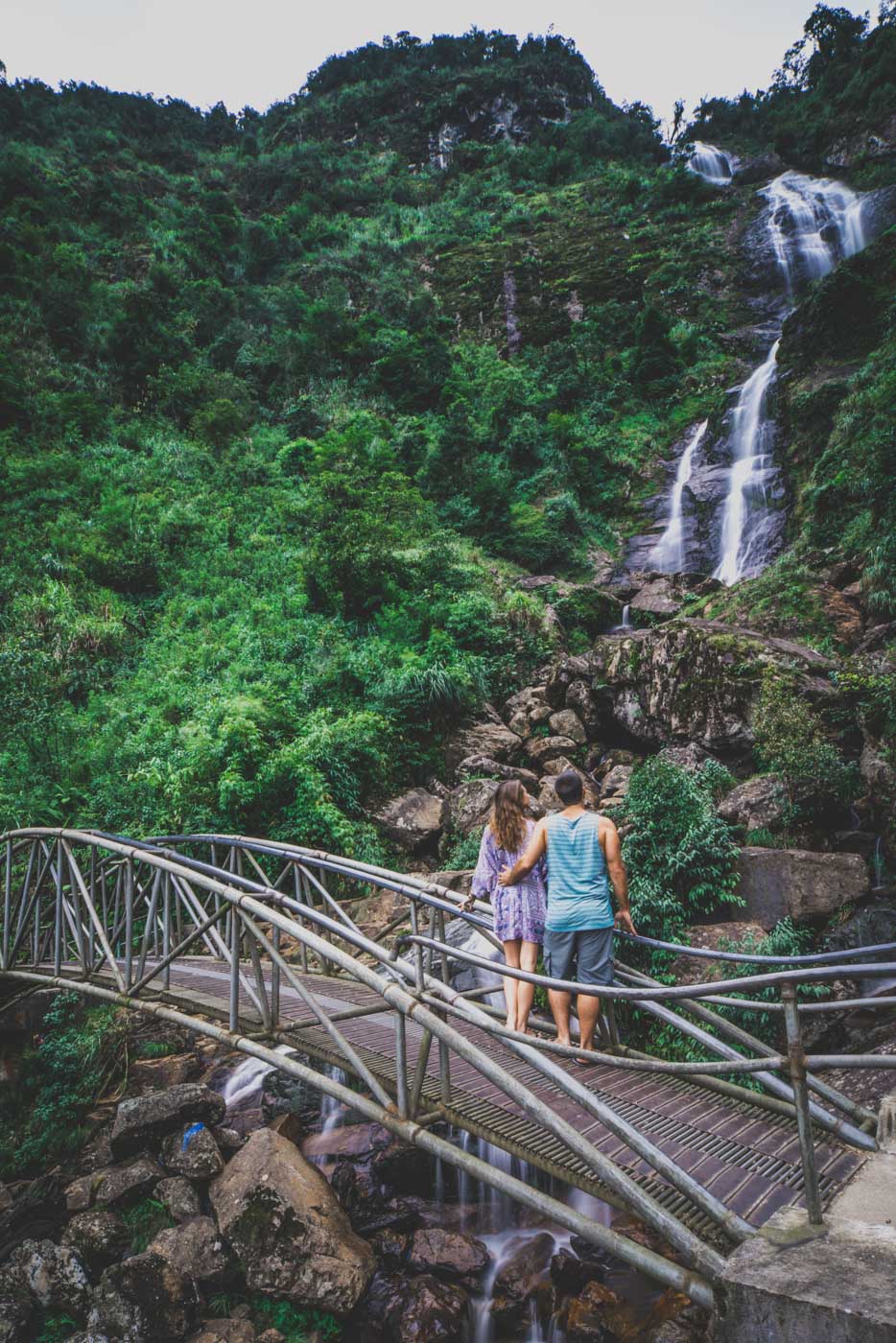
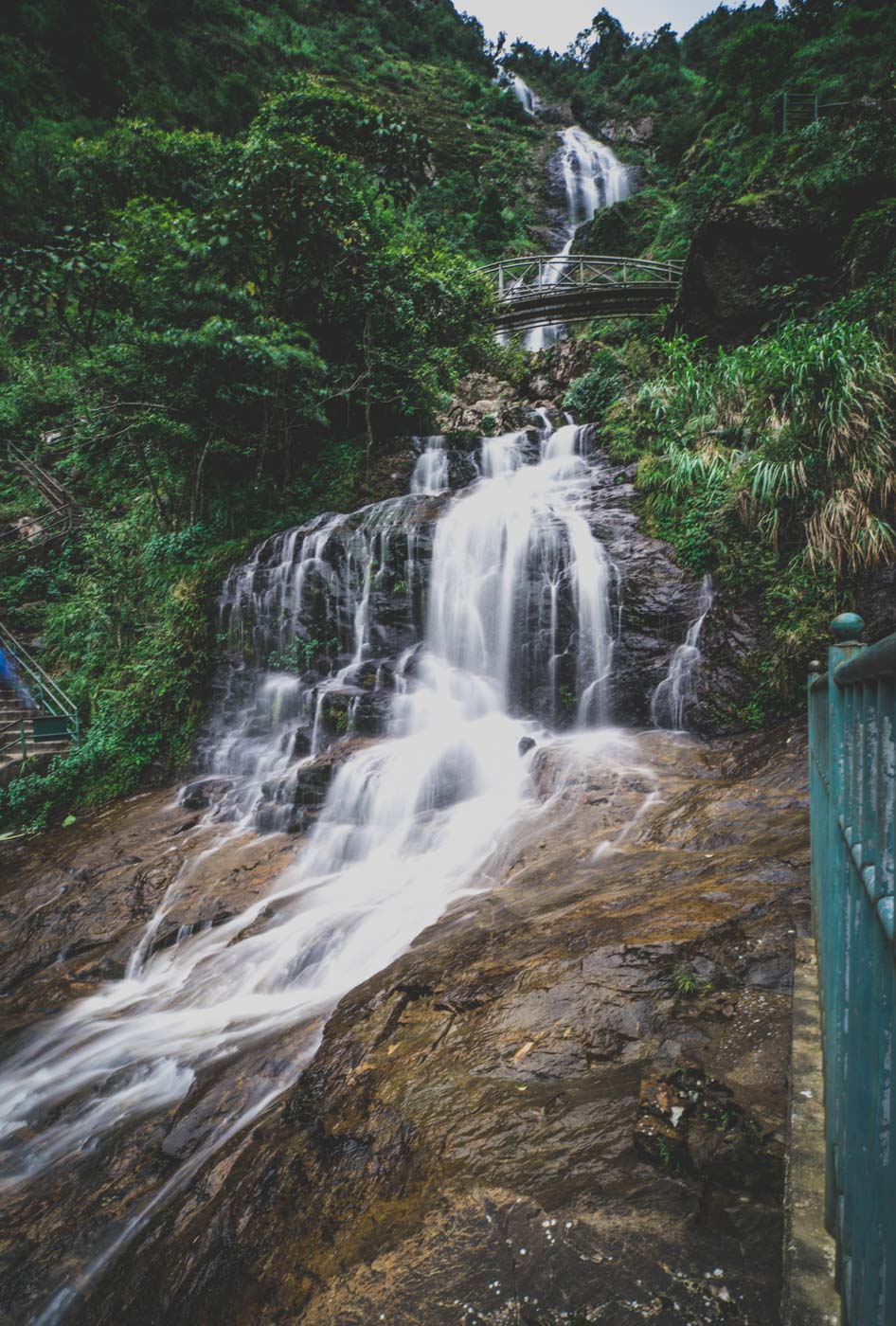
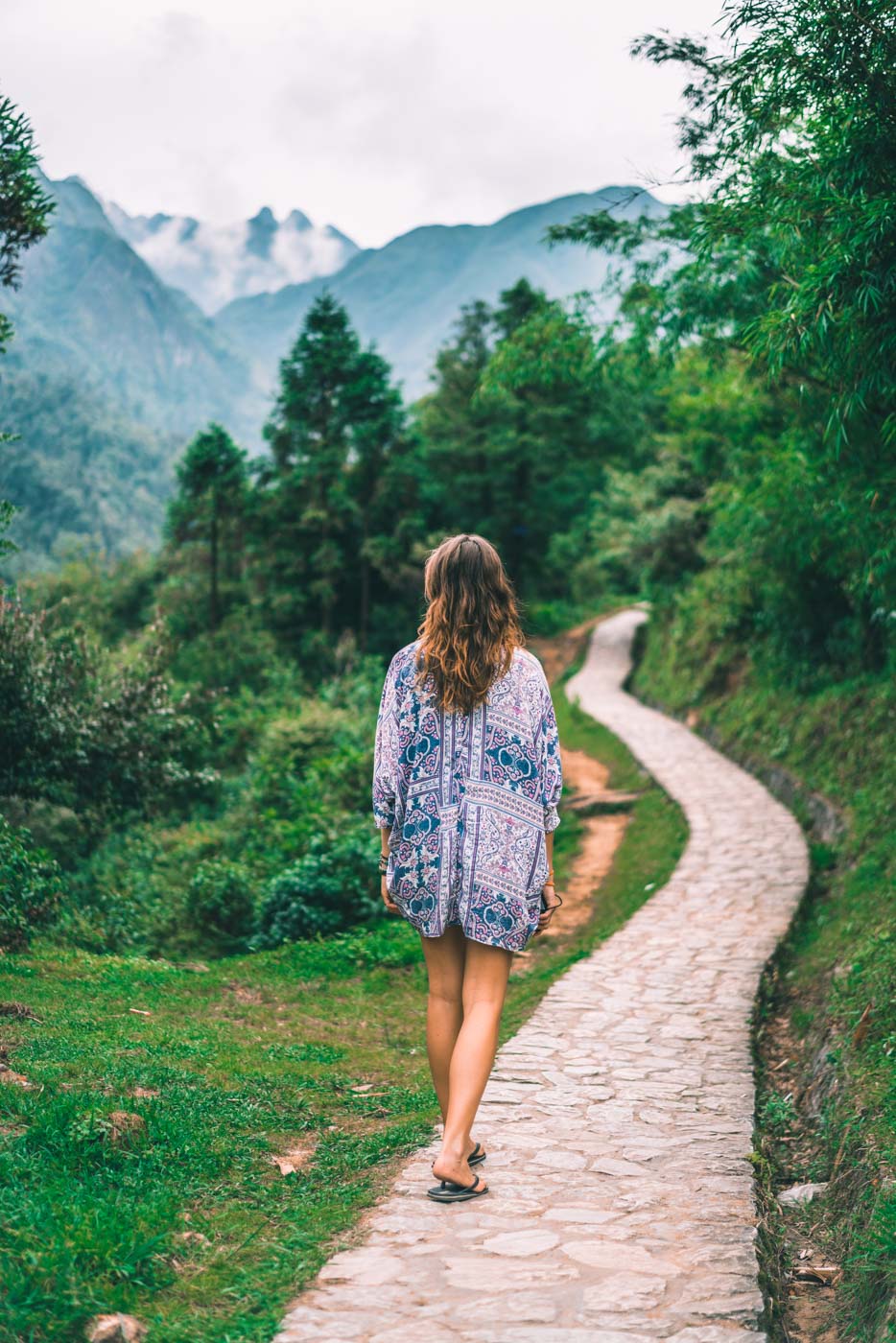
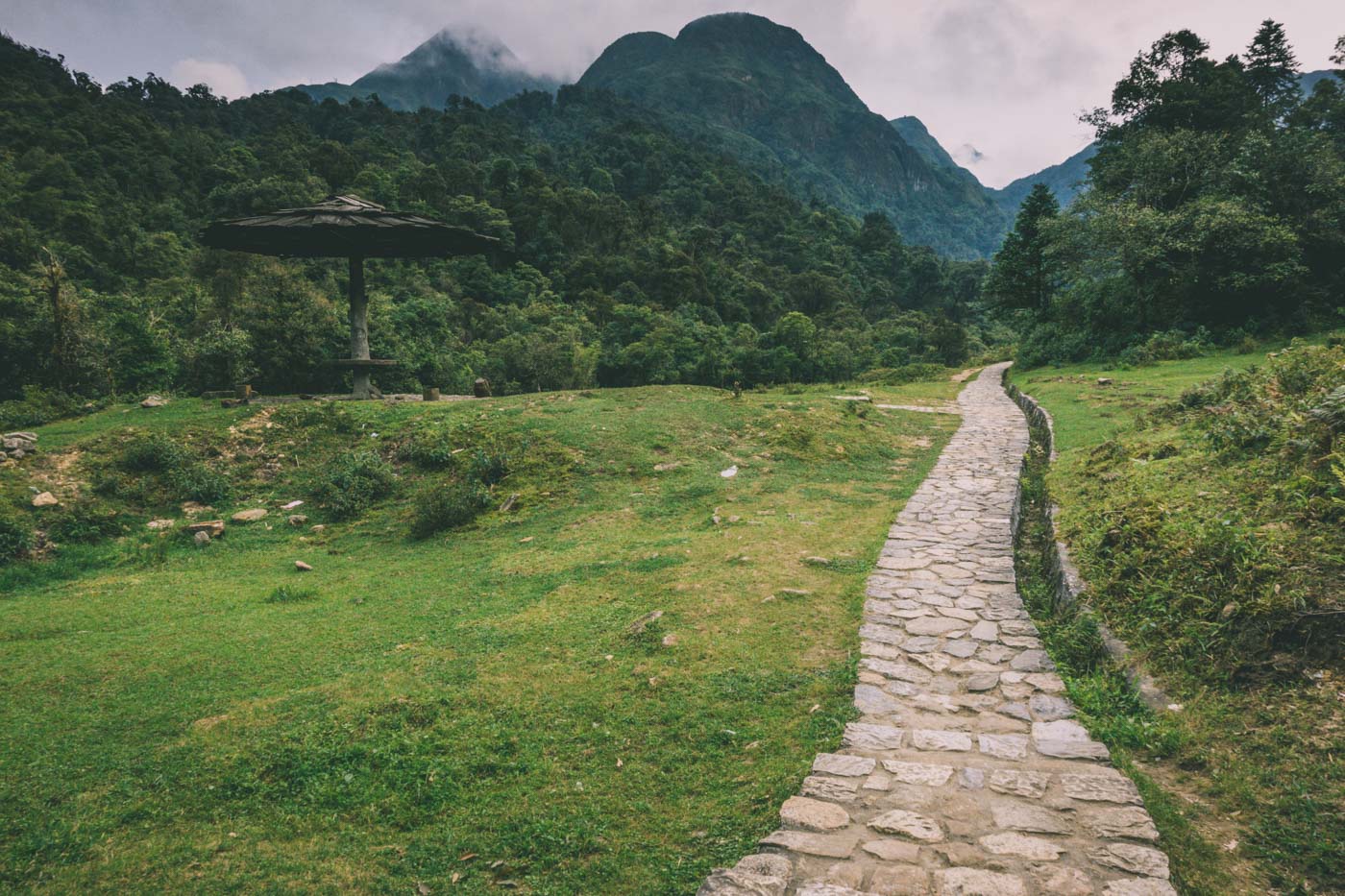
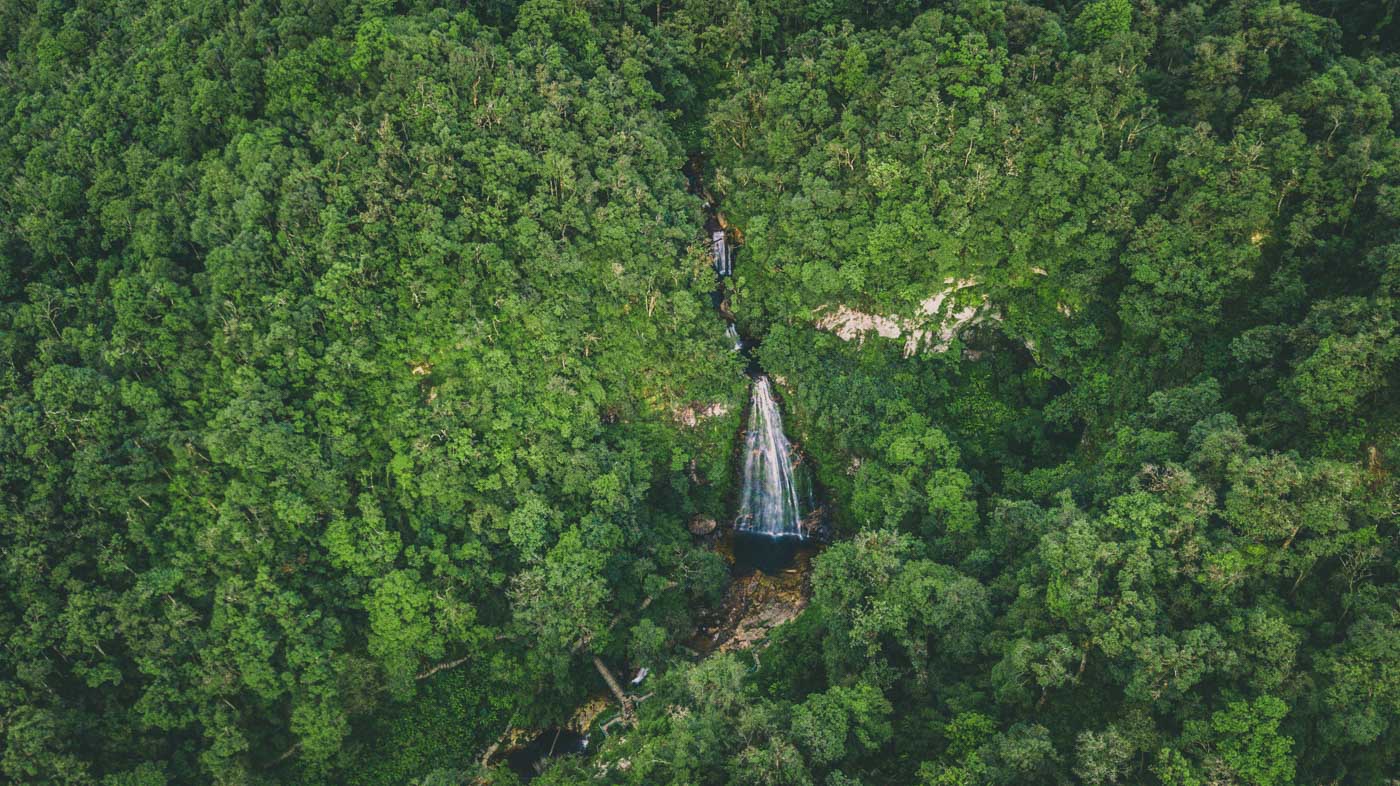
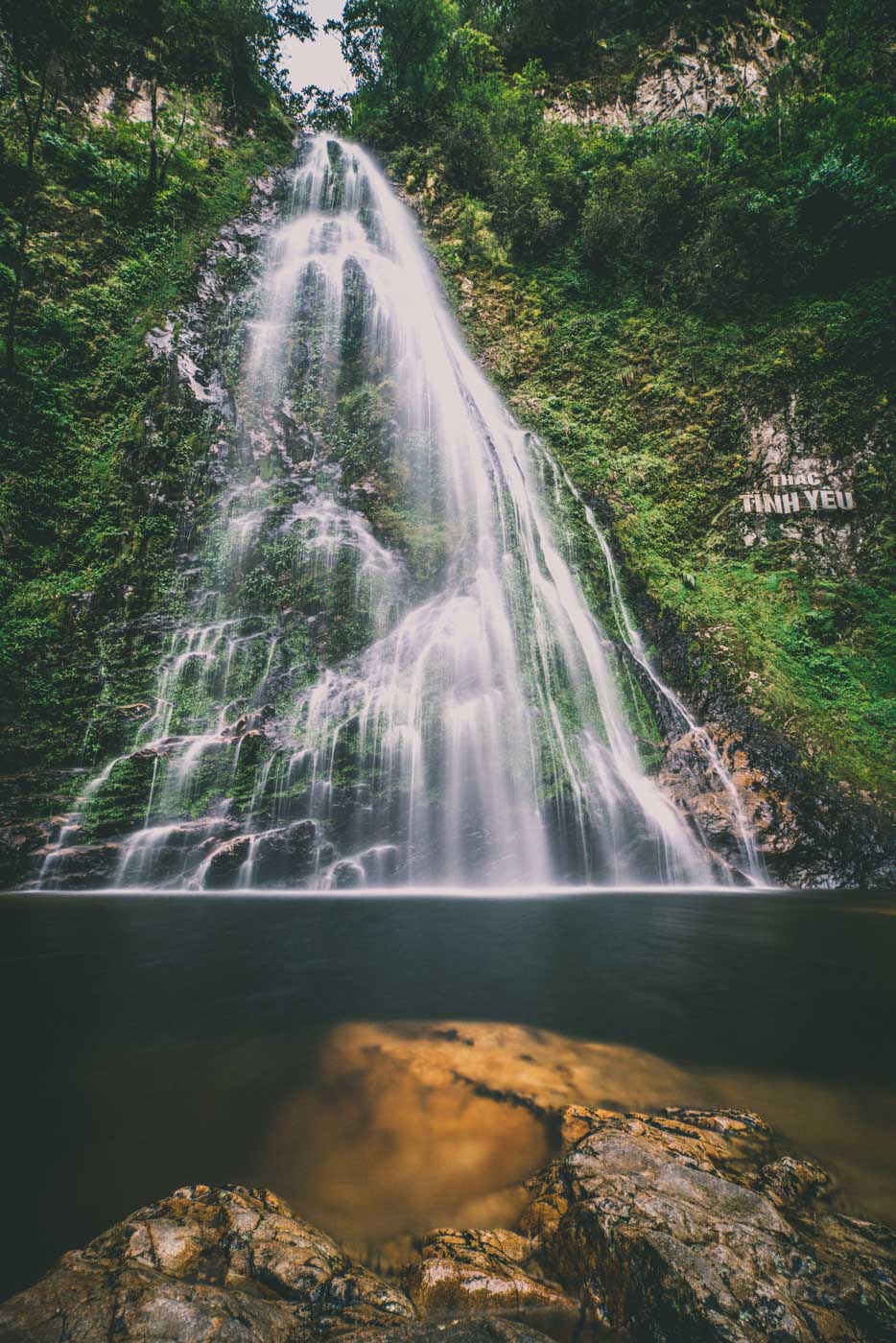
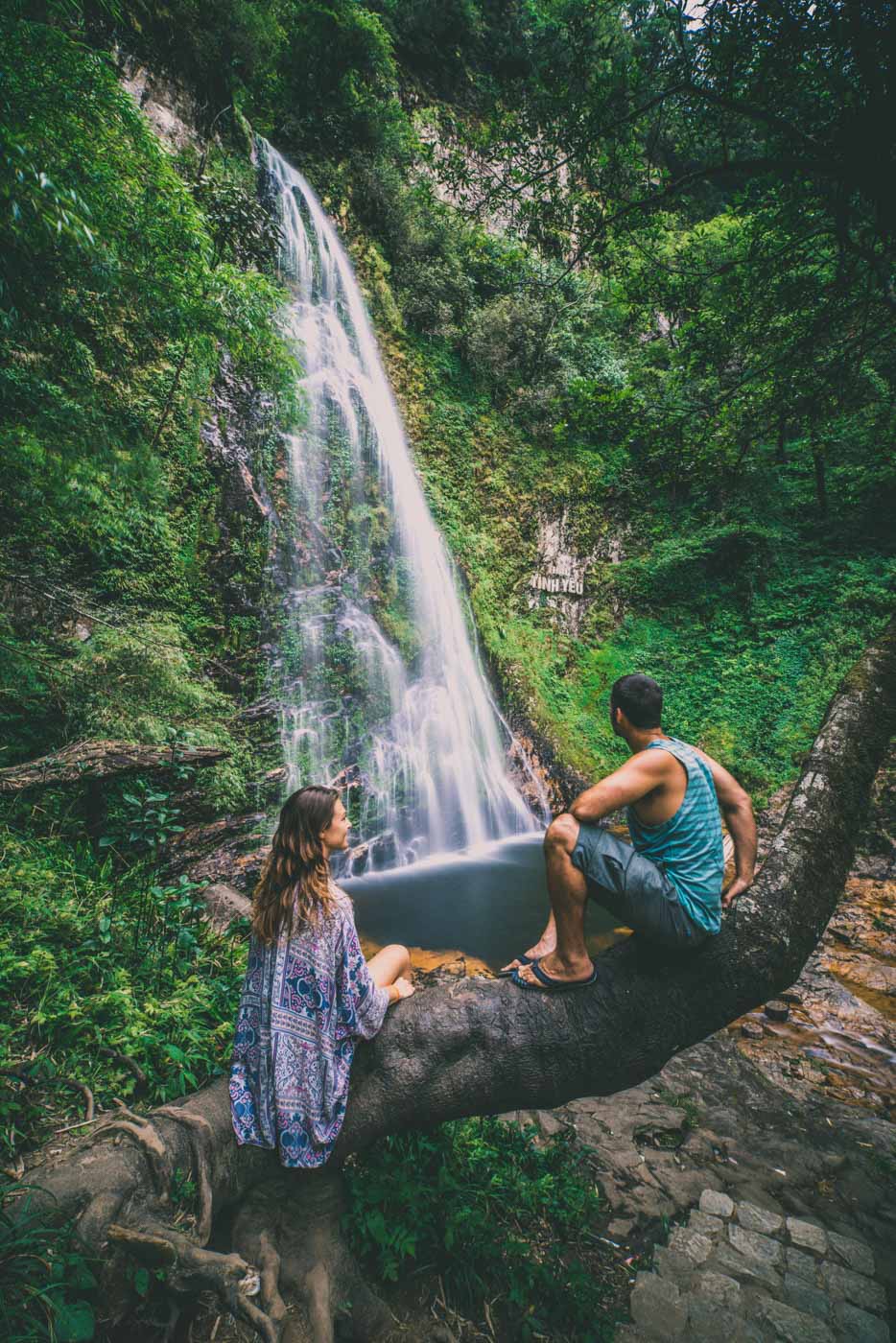

Day 2: Trekking To Hmong Village Of Ta Van
When researching what to do in Sapa, Vietnam, we knew we wanted to do a multi-day trek and Sapa homestay. On the second morning of our 3 days in Sapa, we met a local Hmong woman, Vahn, who would be our guide and our Sapa homestay host for the next 2 days and help us learn more about her culture and the Sapa region.
Her traditional clothing, a pair of long black shorts, a simple button-down shirt, and tennis shoes, made us wonder how well-equipped she was for our 2 days of hiking. We started our Sapa trekking just outside of town, making our way down the muddy trail into the rice terraces. We crossed rivers, passed by water buffaloes, and, despite our expectations, came across no more than 5 other tourists along the way.
The trek was long (we walked close to 20km that day), although not very difficult, with an occasional steep muddy patch. Along the way, Vanh shared stories about herself, her family, and her upbringing in the Hmong community, drawing us into her life story one detail at a time.
By the time we arrived at her mother’s home in Ta Van, we felt like we knew her whole family, which enriched our Sapa homestay experience. Her mother was a weaver and an artist known in the local community for her beautiful hemp textiles.
Her weaving and painting studio, which also served as a classroom and a shop, was located next to the main house. The door is always open to tour groups or individual travelers looking to learn more about the Hmong textile traditions, which could likely fill a Sapa blog all on its own.
Vanh’s family welcomed us into their home and put on a beautiful dinner spread to show us the best of the local cooking. Our attempts to help with the cooking were brushed off with a chuckle.
“Do you eat like this every day?” we asked Vanh, amazed at the variety of dishes in front of us. It was a picture-perfect, Insta-worthy spread for our Sapa travel blog.
“No,” she laughed, “only when we have guests.”
A part of us was happy that our Sapa homestay (and the financial benefit that came with it) allowed this family to enjoy a fancier meal than usual. The other part felt a tad bit guilty for adding extra work to their already busy day.
While they definitely put some effort into the meal, we were happy that they didn’t put on a show or change their daily behaviour to accommodate for our visit, as our intention behind doing a Sapa homestay was to truly see what their lives were like and experience an in-depth cultural exchange. After dinner, the family sat in front of the TV, watching kid’s cartoons while husking corn.



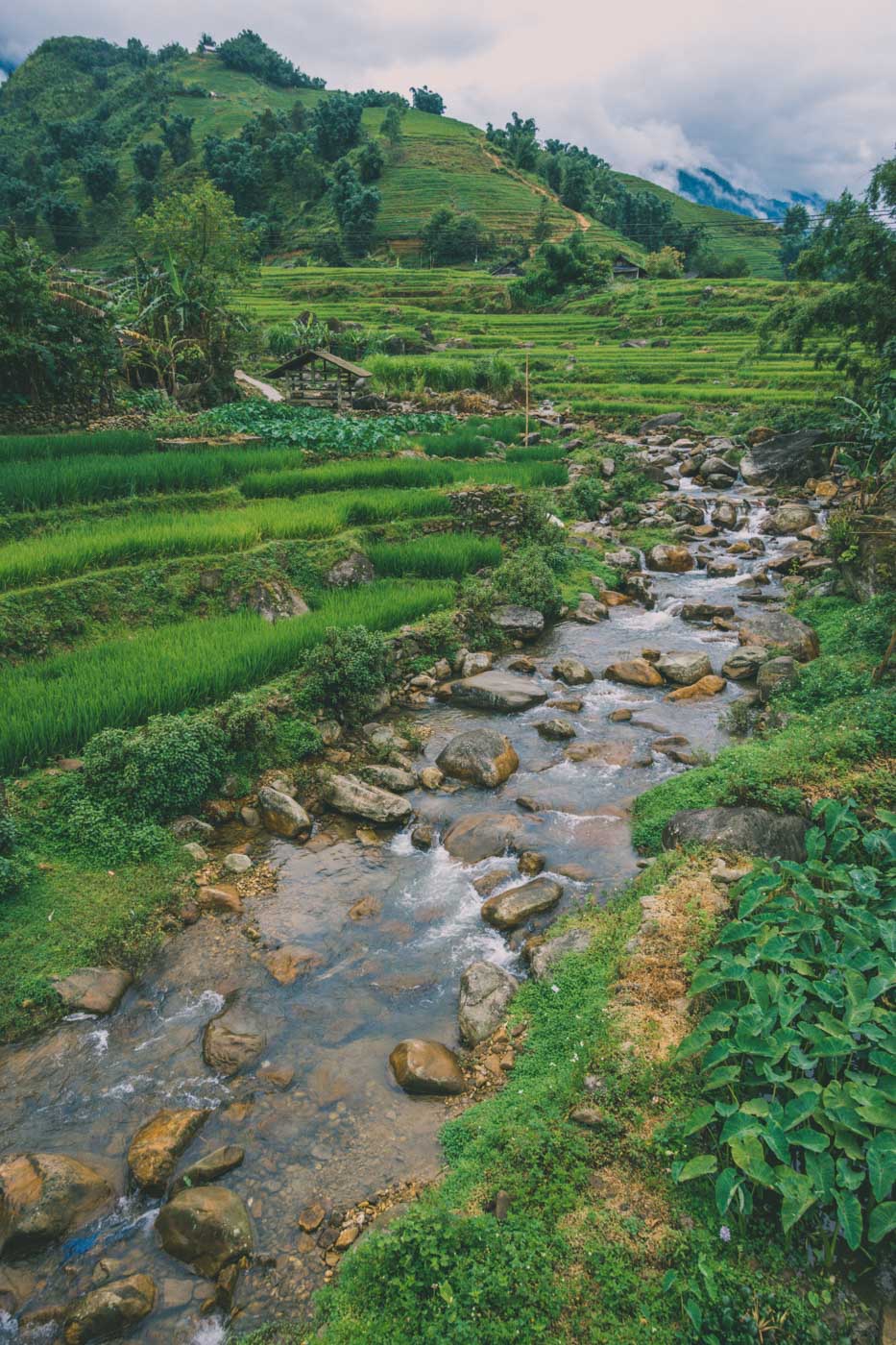
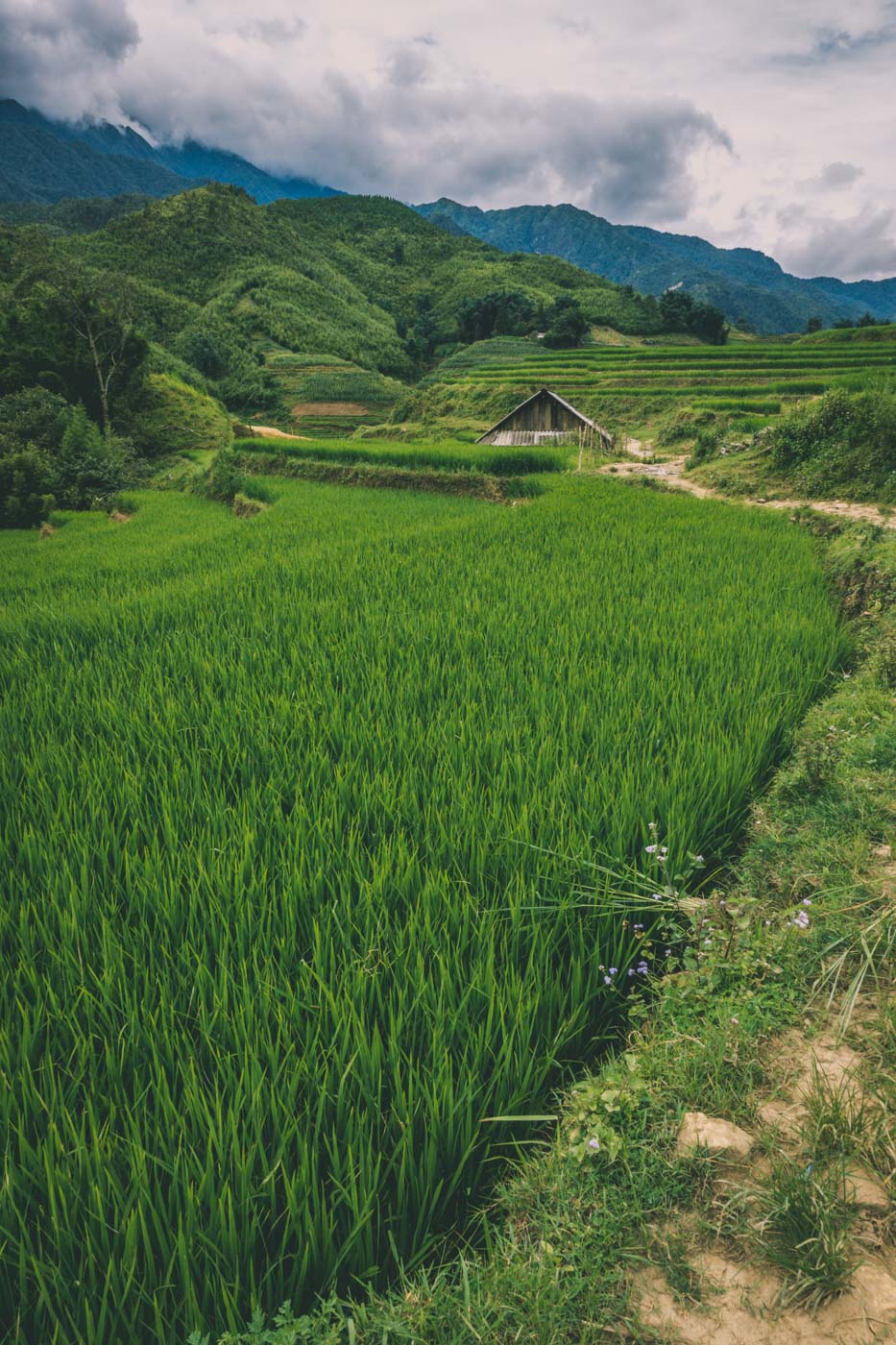
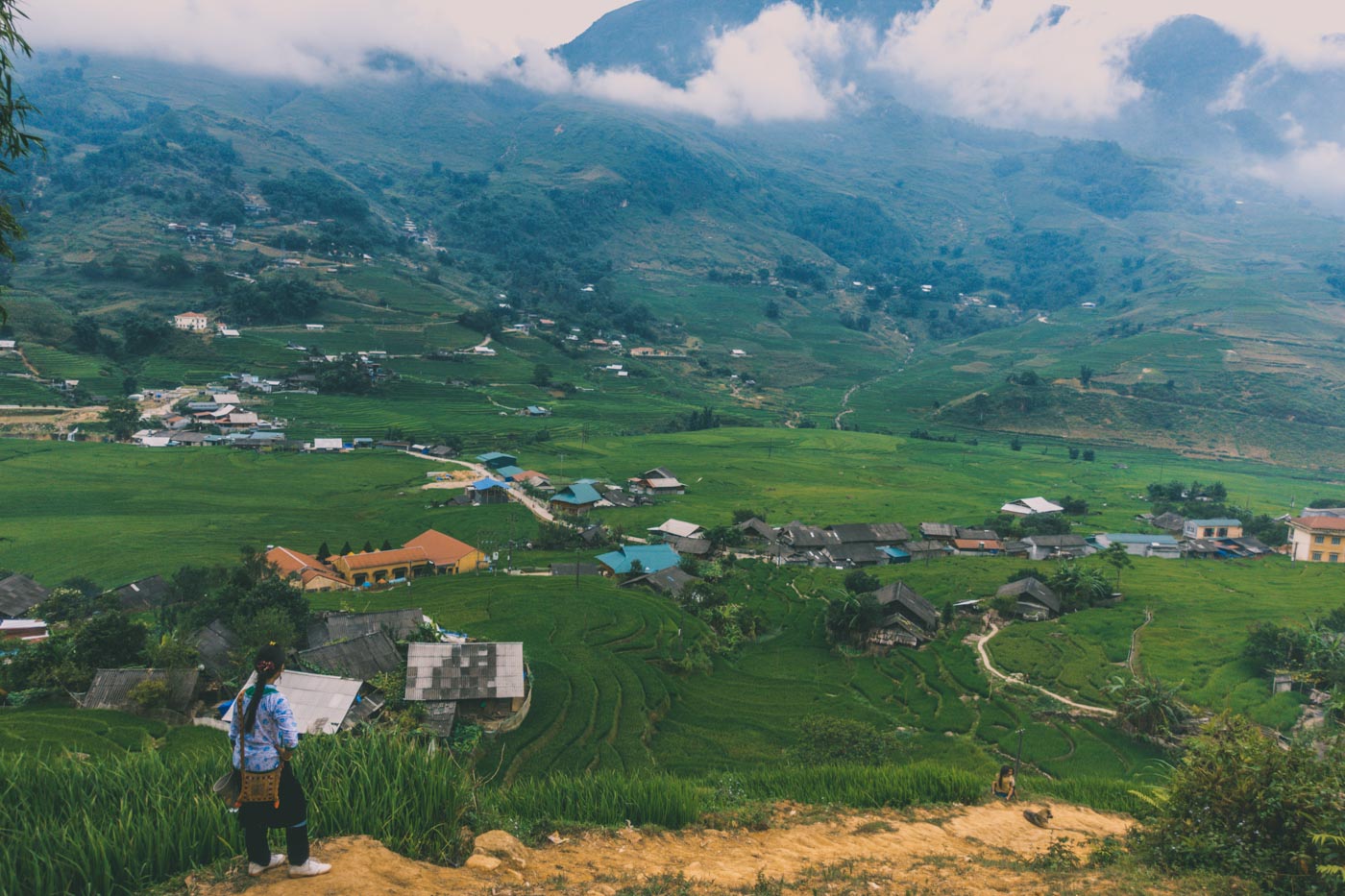
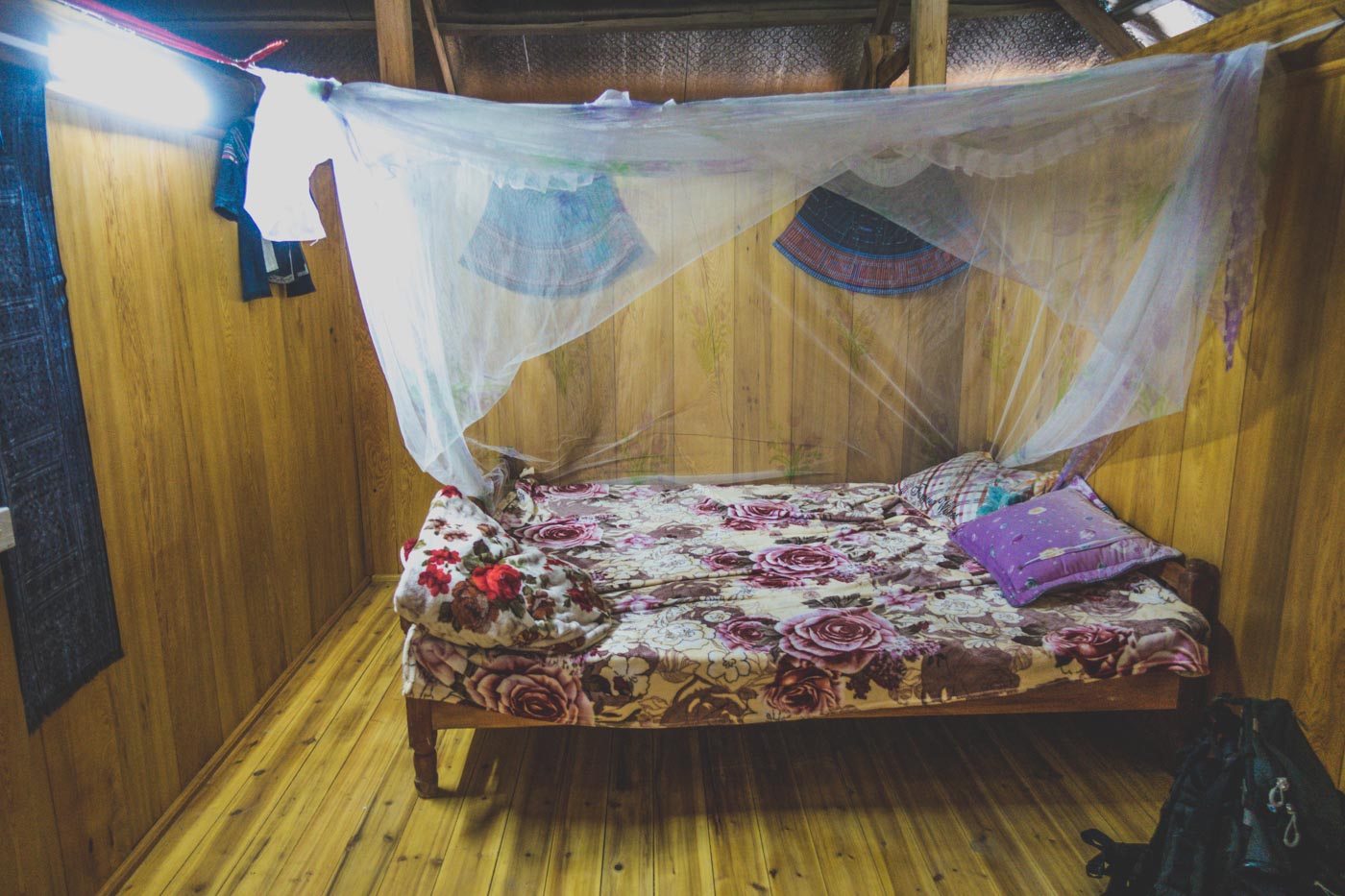
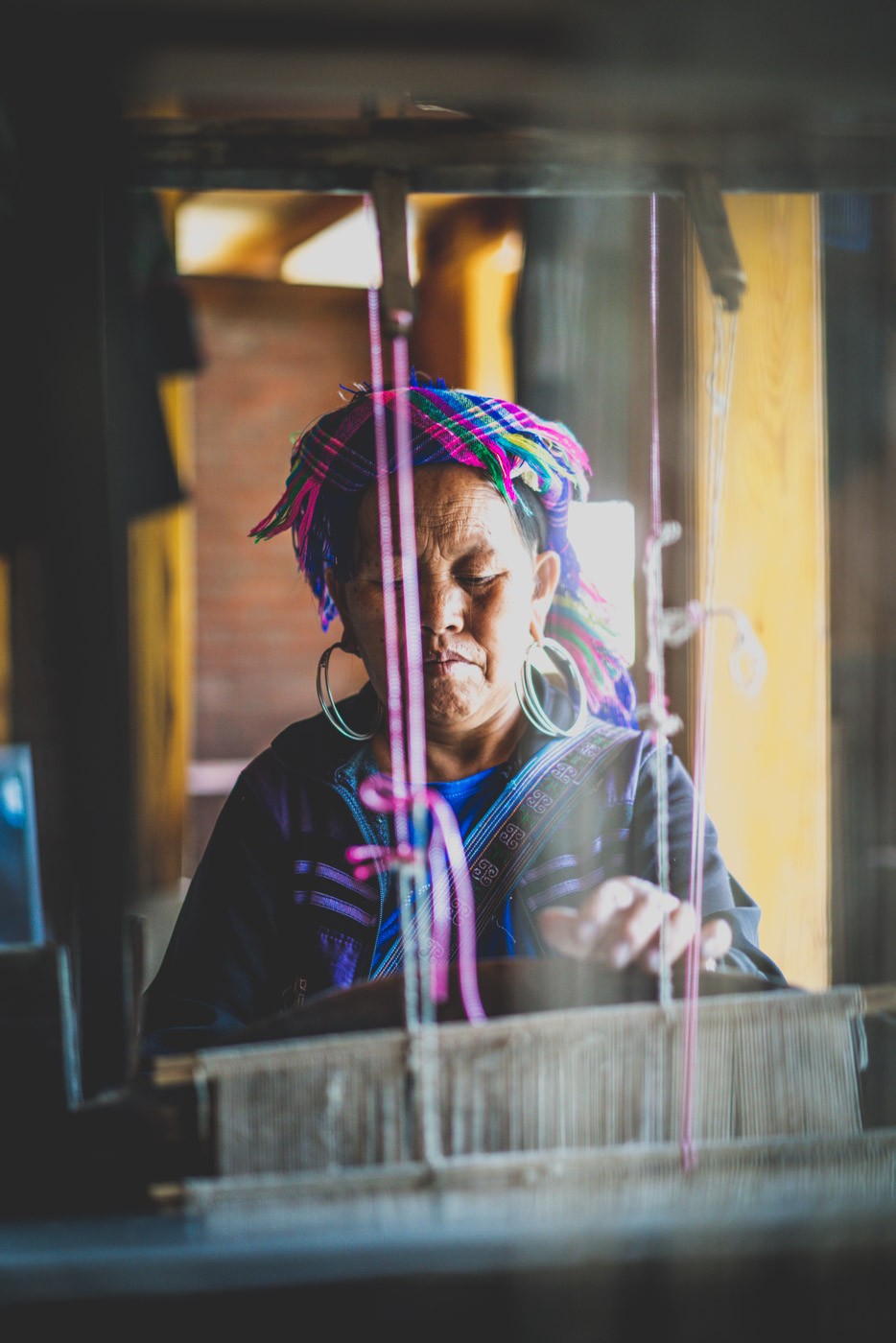
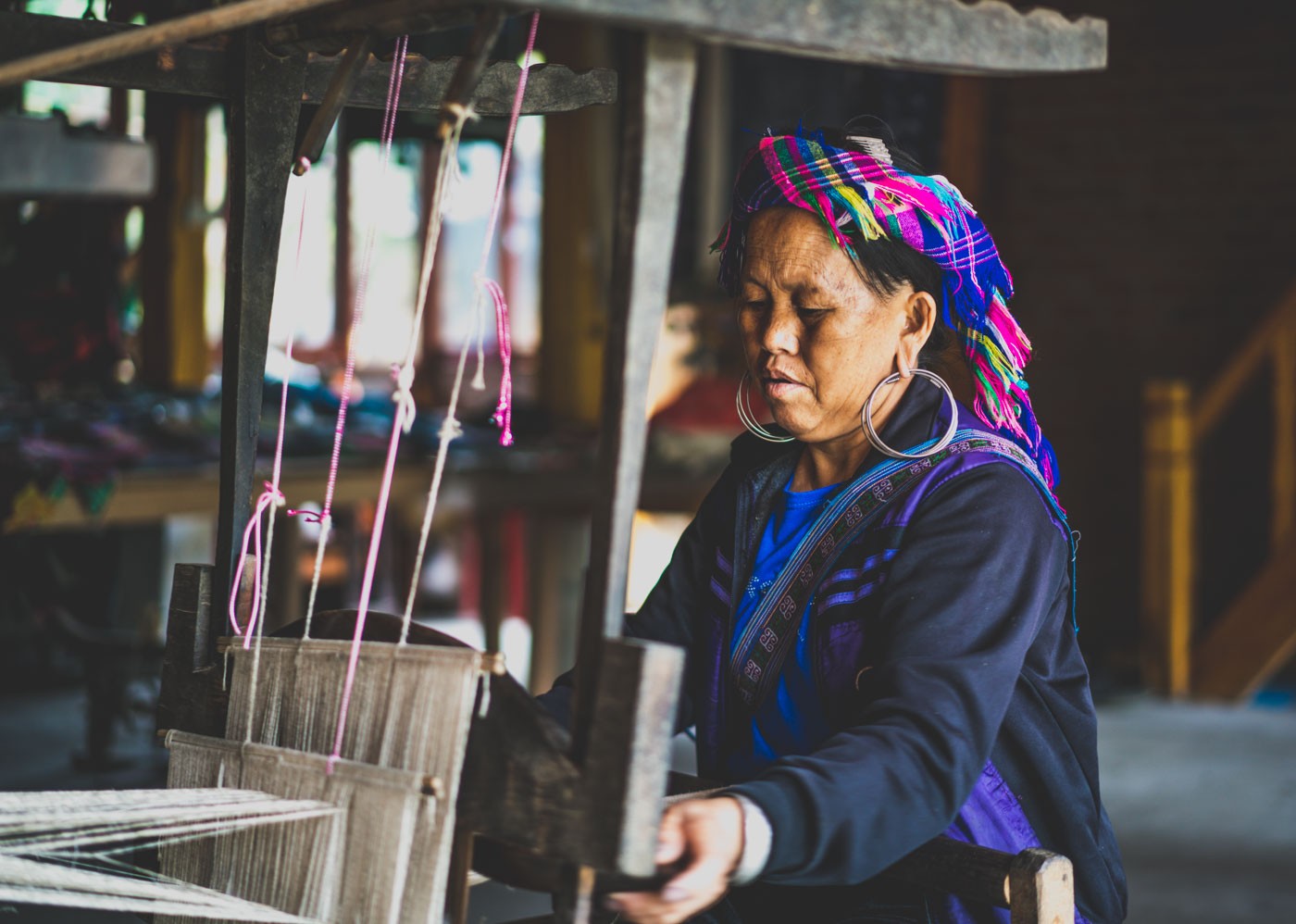
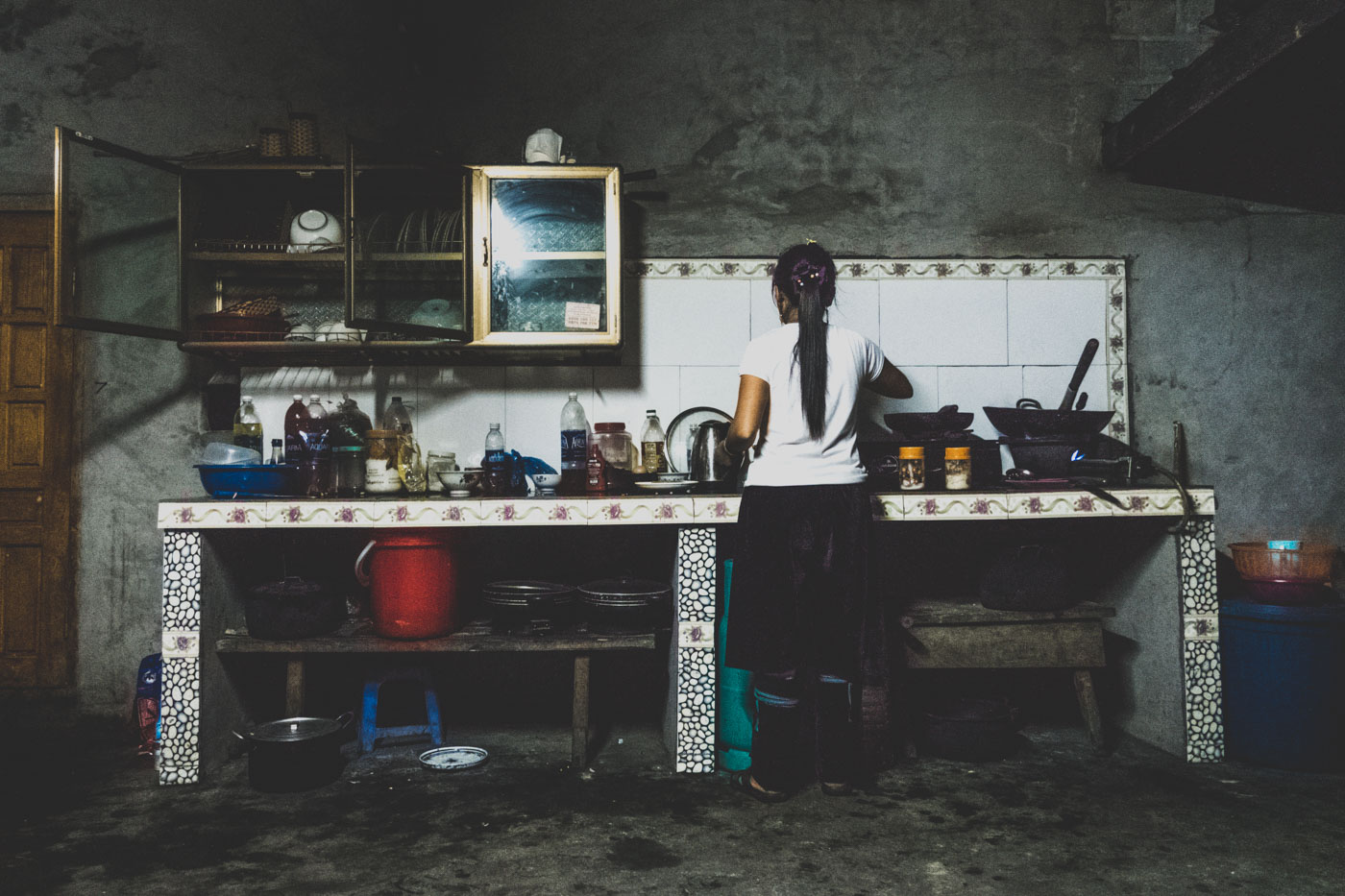
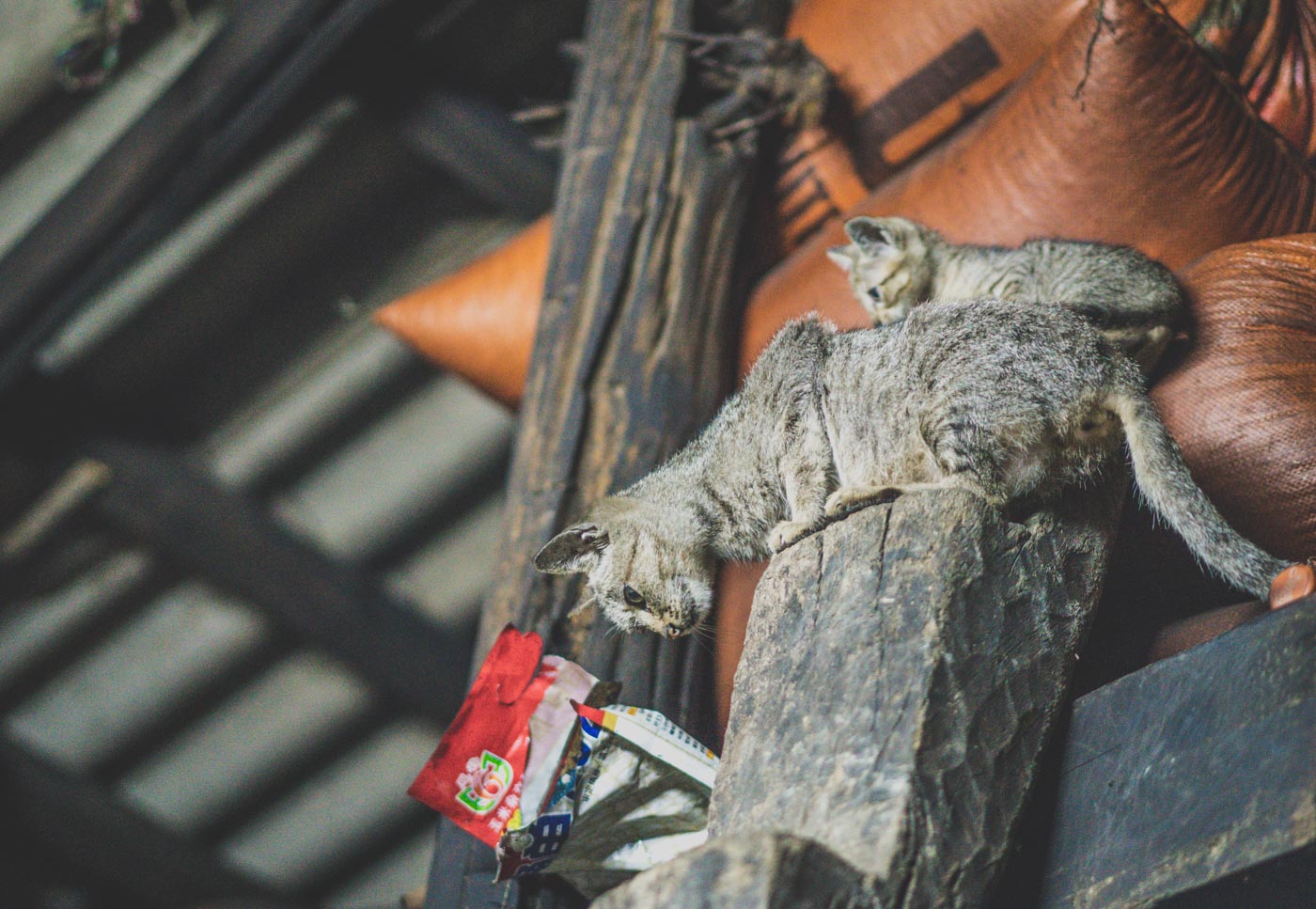
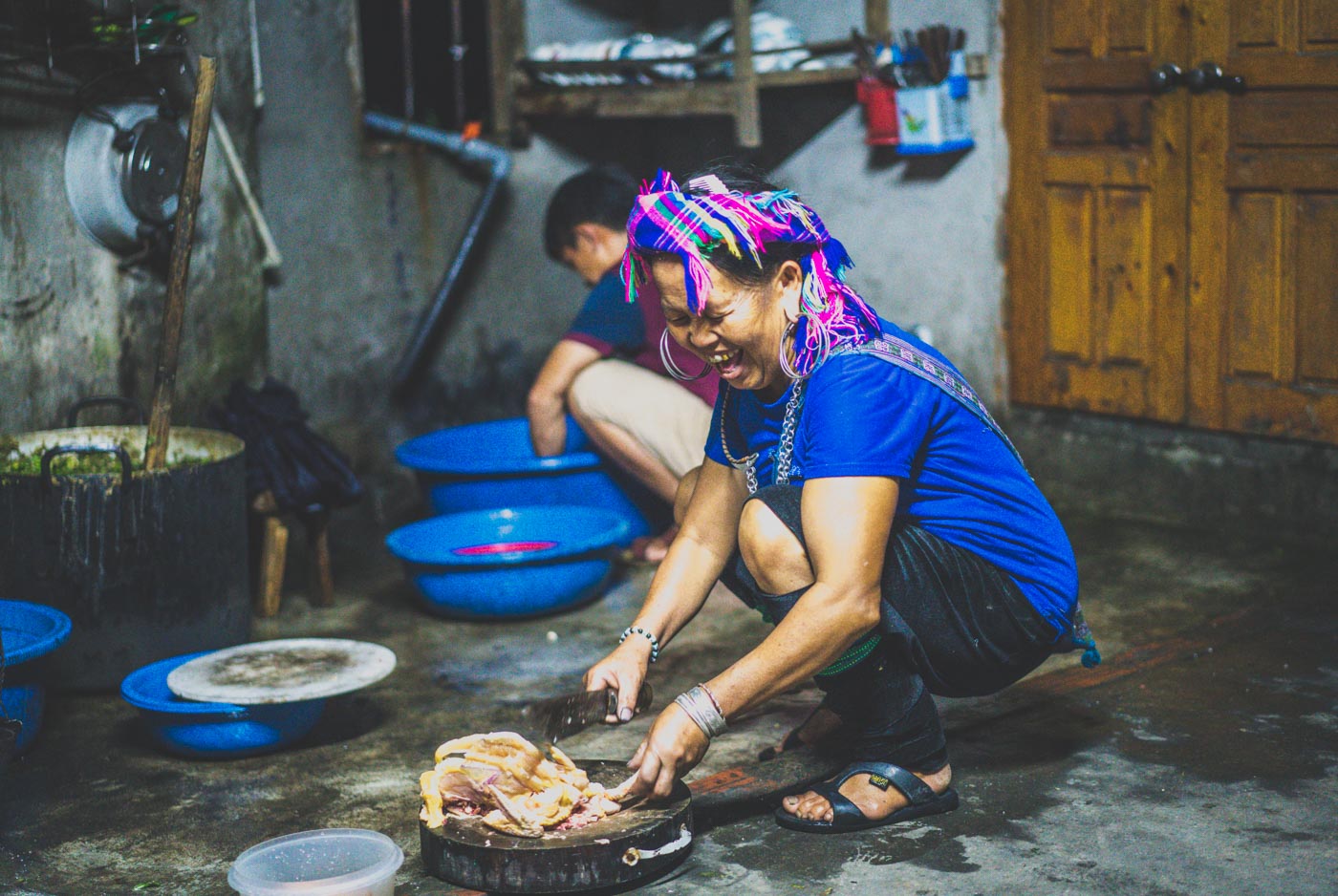
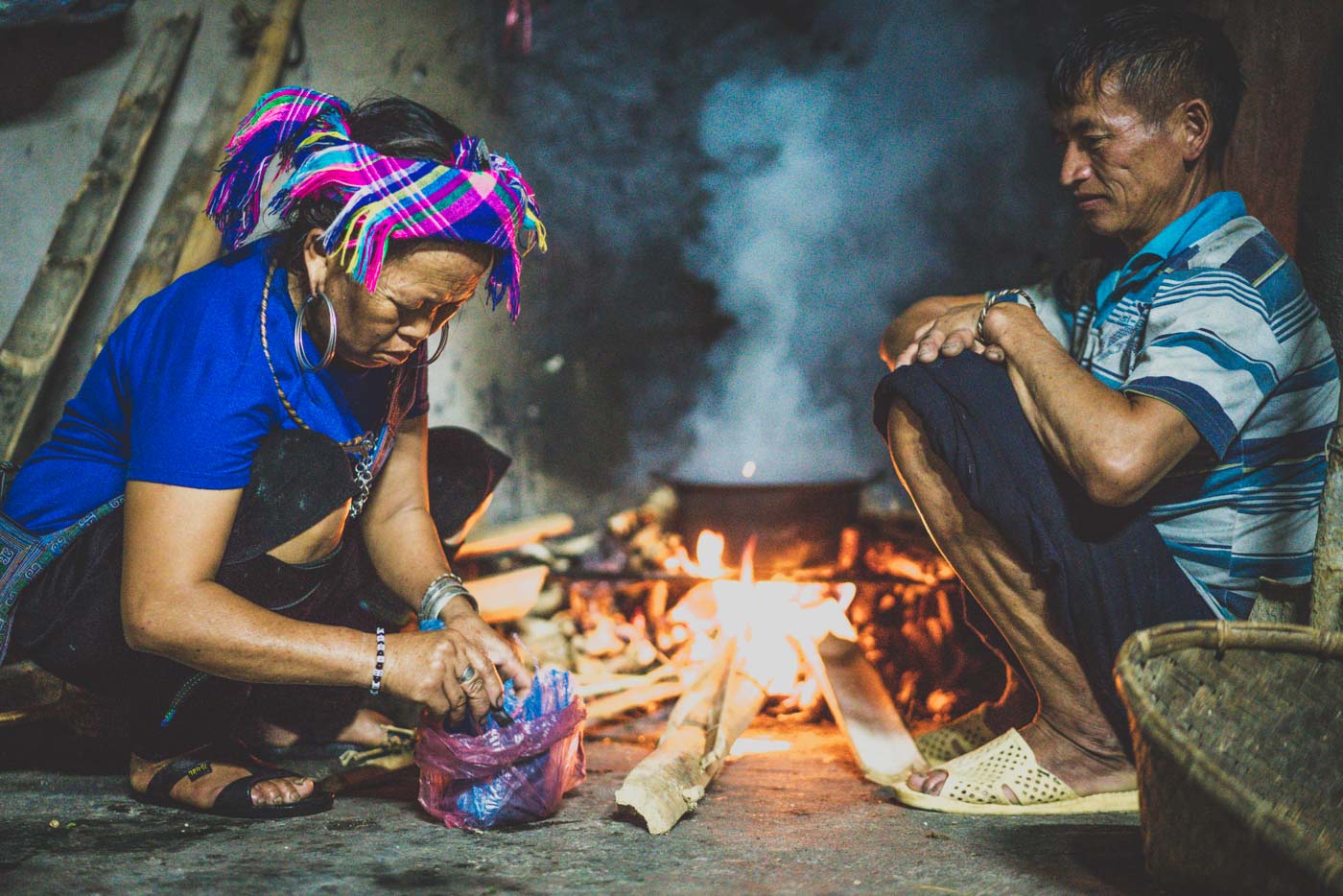
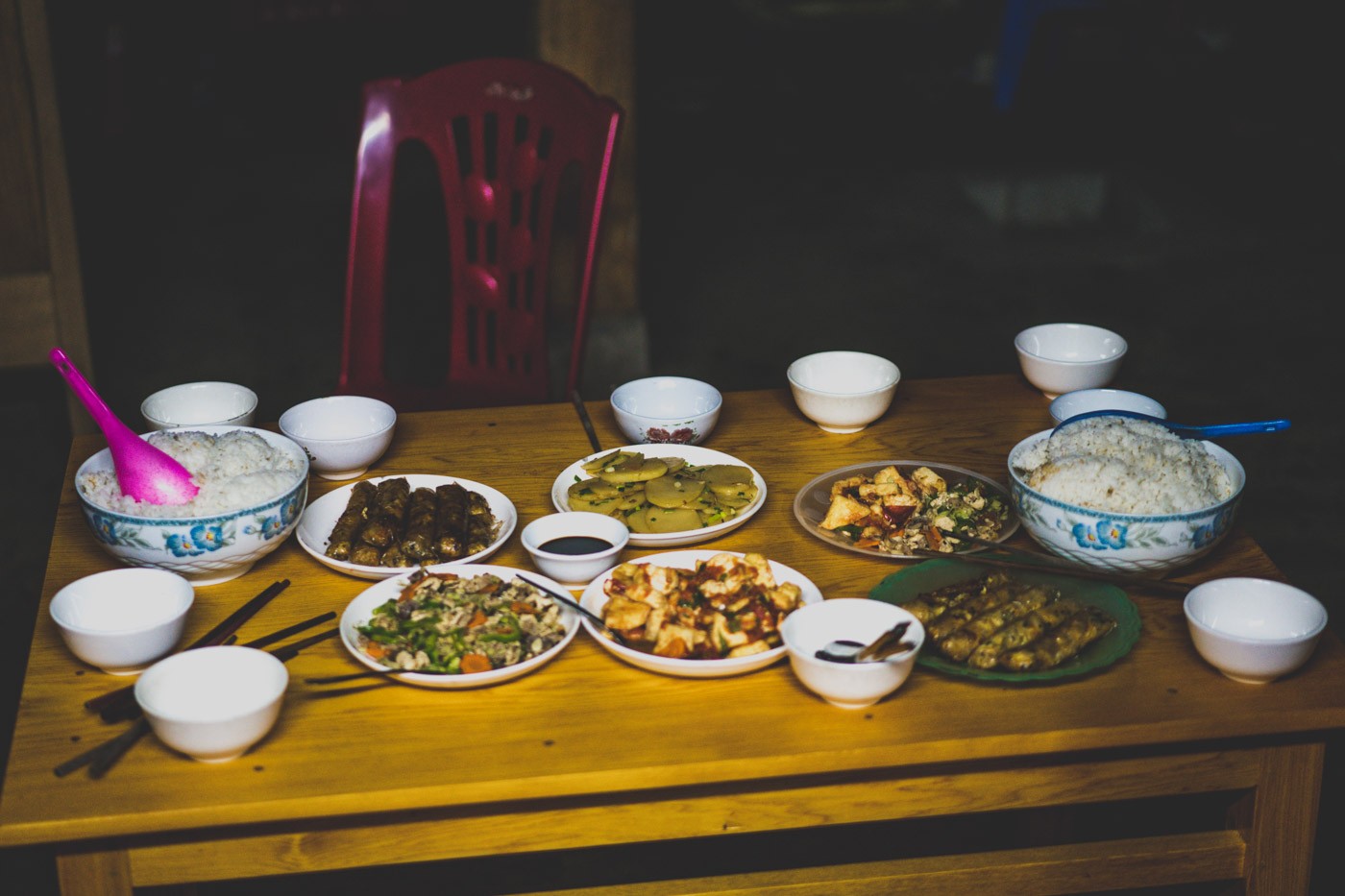
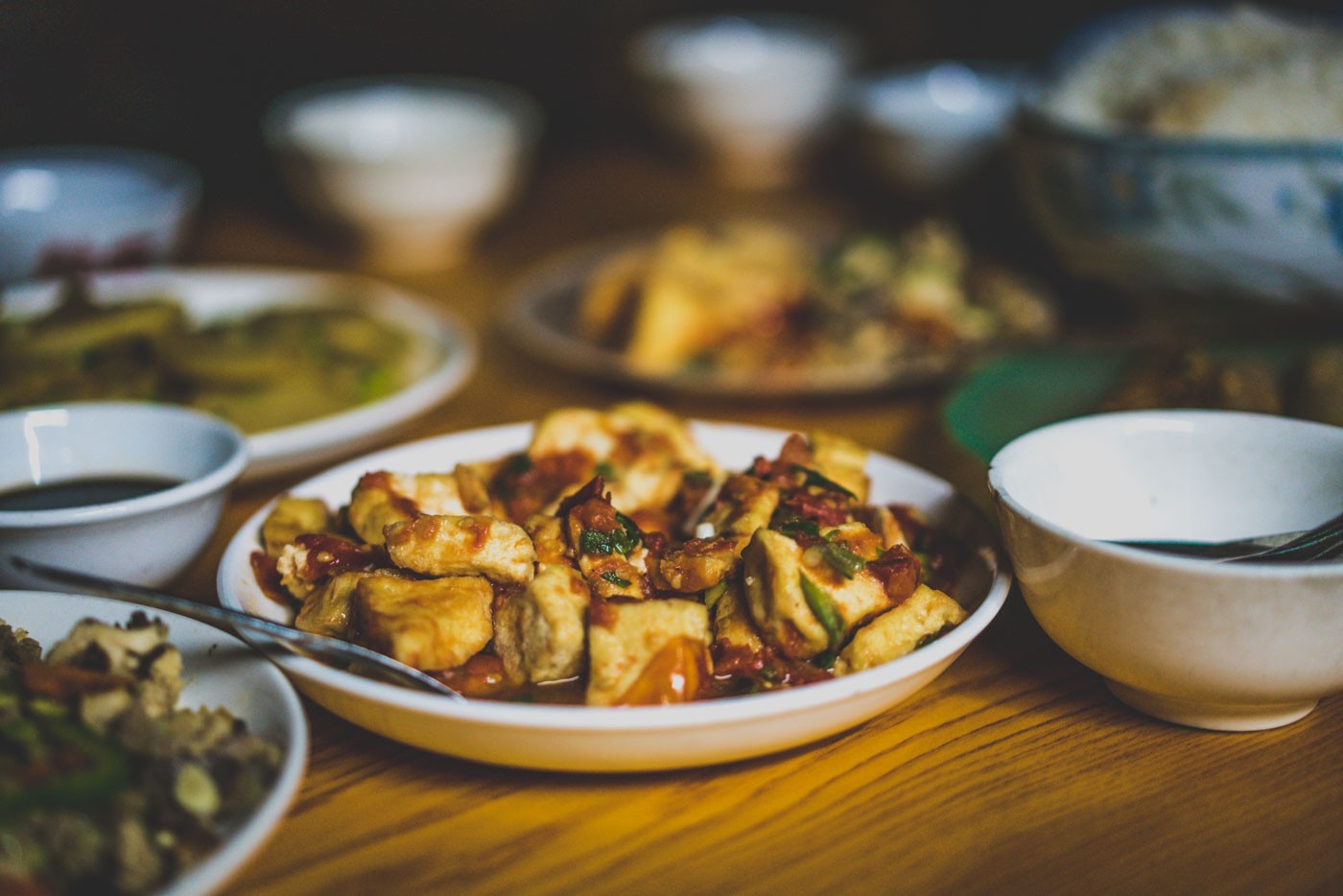
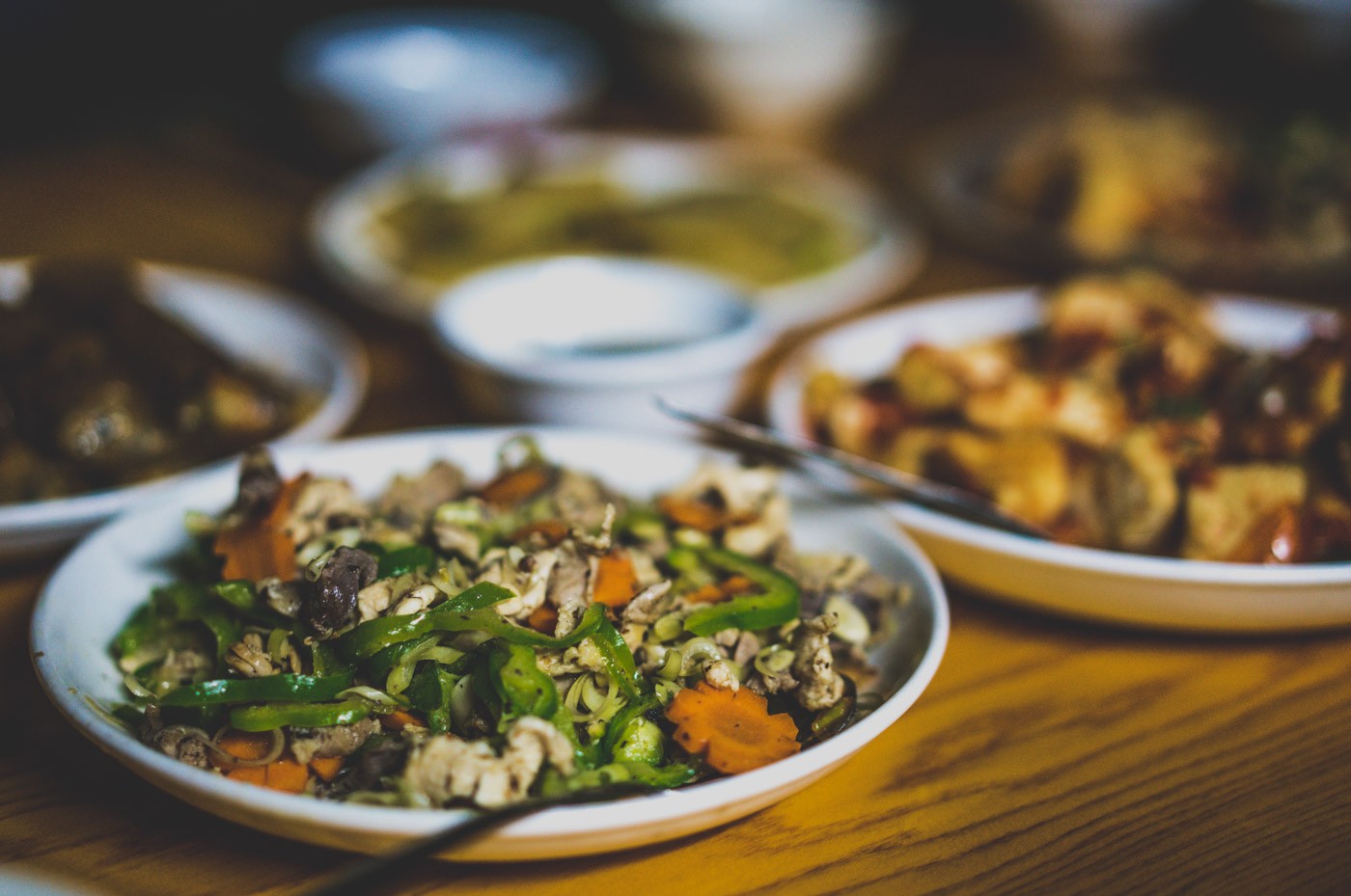

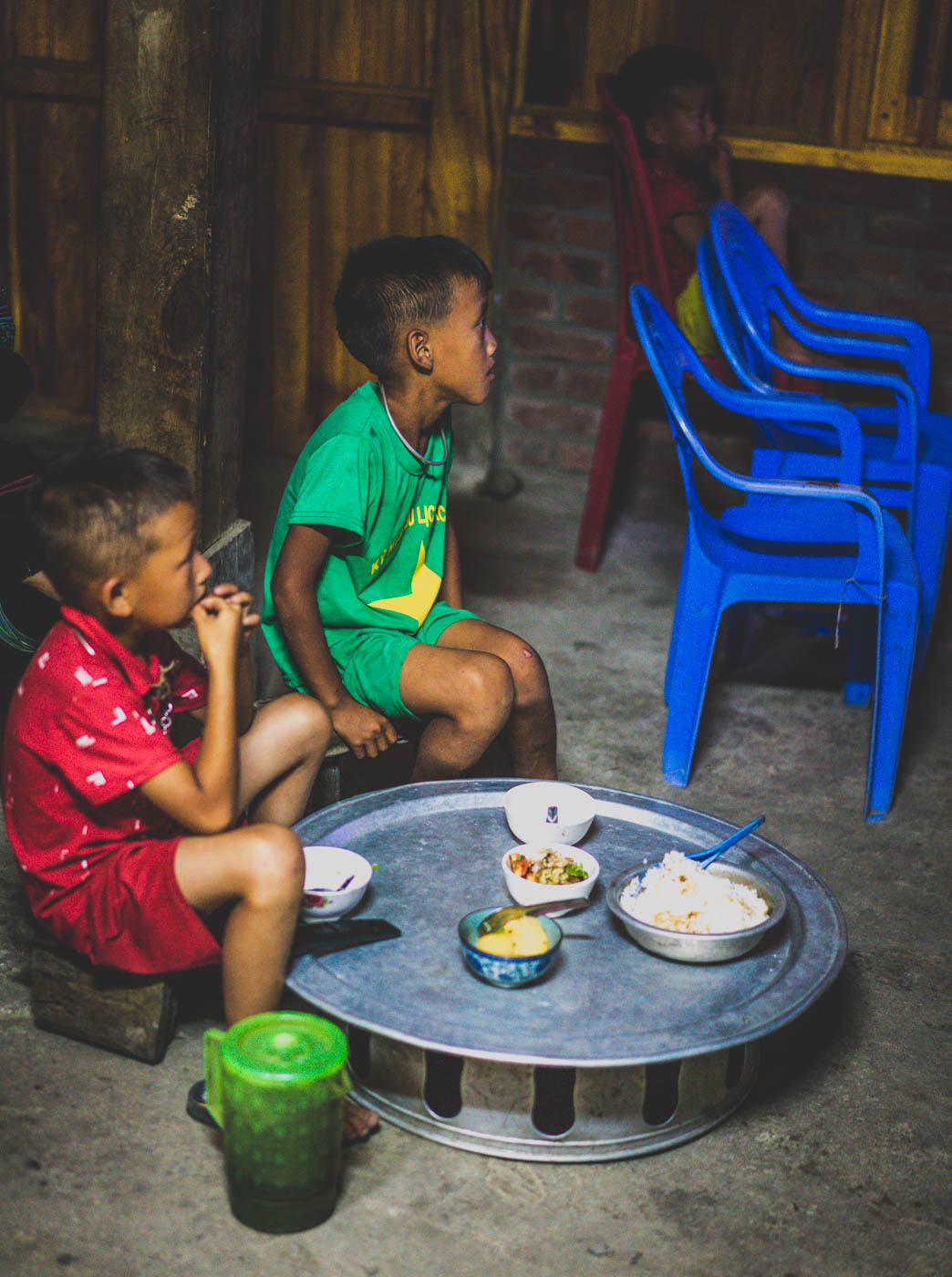
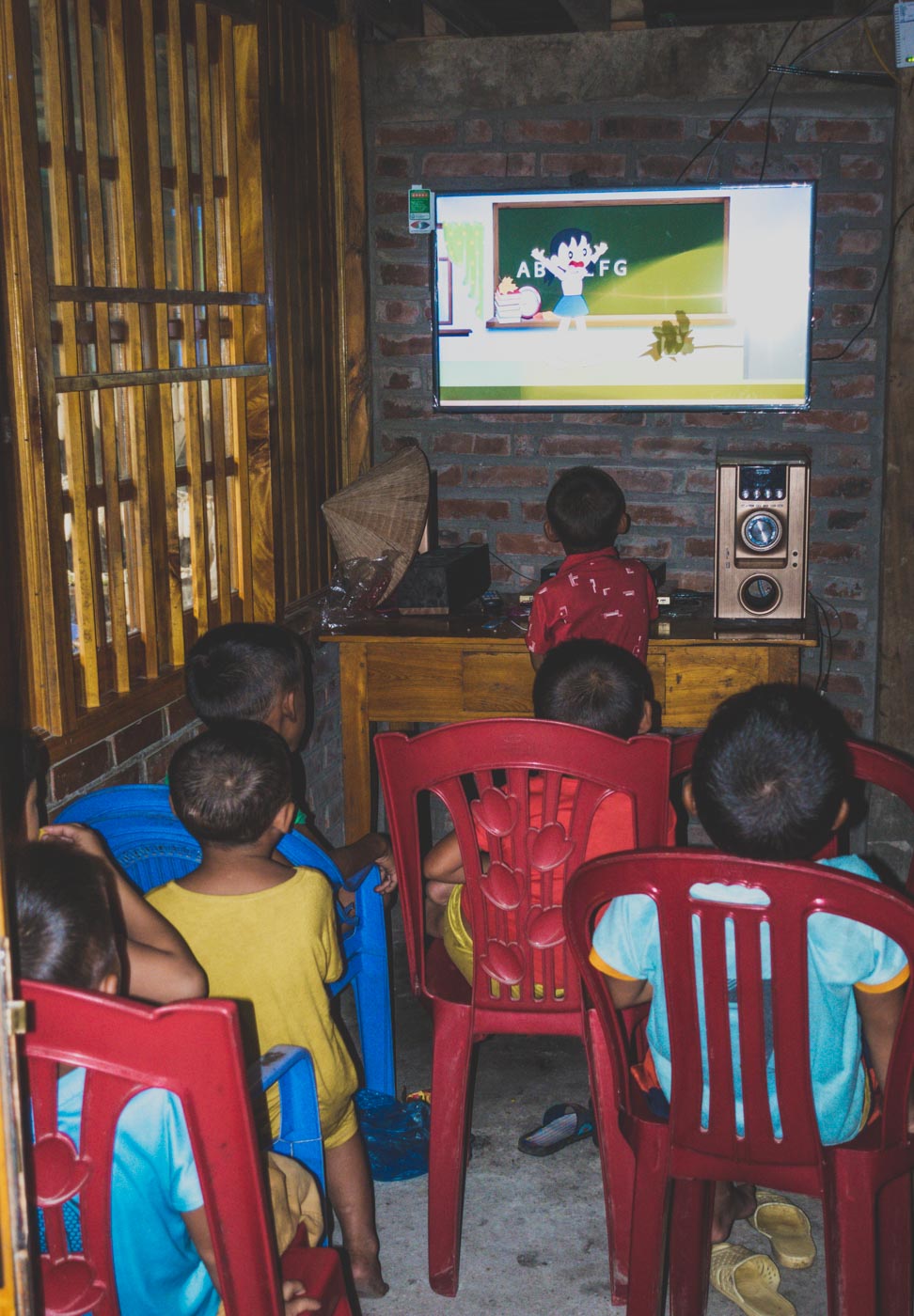
Day 3: From Ta Van To Su Pan To Sapa
After spending the night at Vanh family’s homestay, on day 3 of our 3 days in Sapa we continued our Sapa trekking in the countryside. The plan was to trek another 10-15 kms away from Sapa, passing through more Hmong villages along the way. The rain hit hard in the morning, but we decided to push on to make the most of our last day in Sapa, Vietnam.
Vanh offered us a choice of two trails – a muddy one over the mountains or the paved one used by motorcycles and locals to get from one village to the other. We appreciated the choice, given the weather, and opted for a better road that passes through villages along the way.
The views that day were especially beautiful, dotted with pockets of daily life. We wished we had more time to explore the area, but our time in the Sapa, Vietnam region was coming to an end.
After a simple but tasty lunch in Su Pan village, we grabbed a motorcycle ride back to Sapa, where we packed our bags and caught a minibus back to the train station for our overnight train to Hanoi.

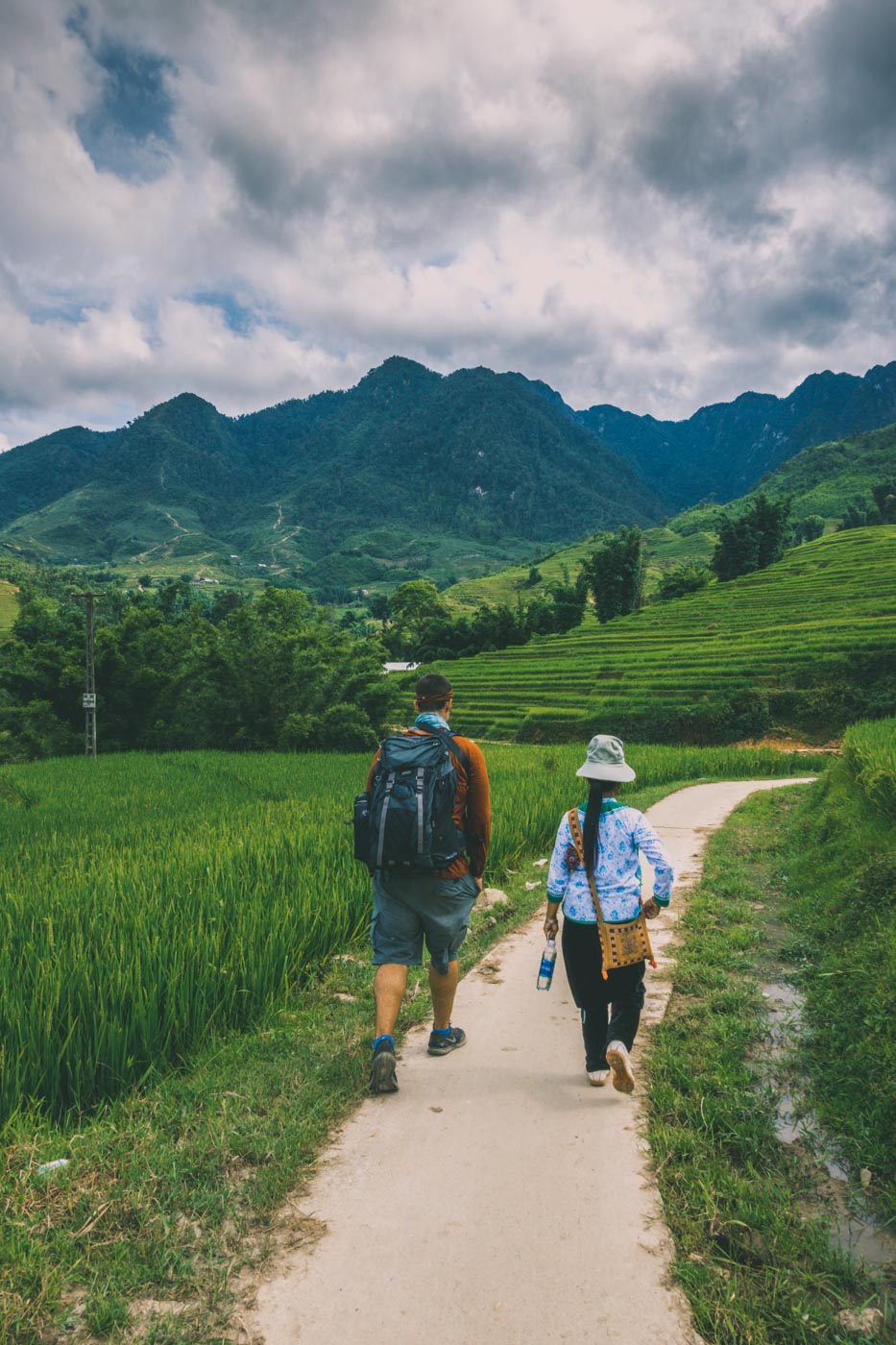
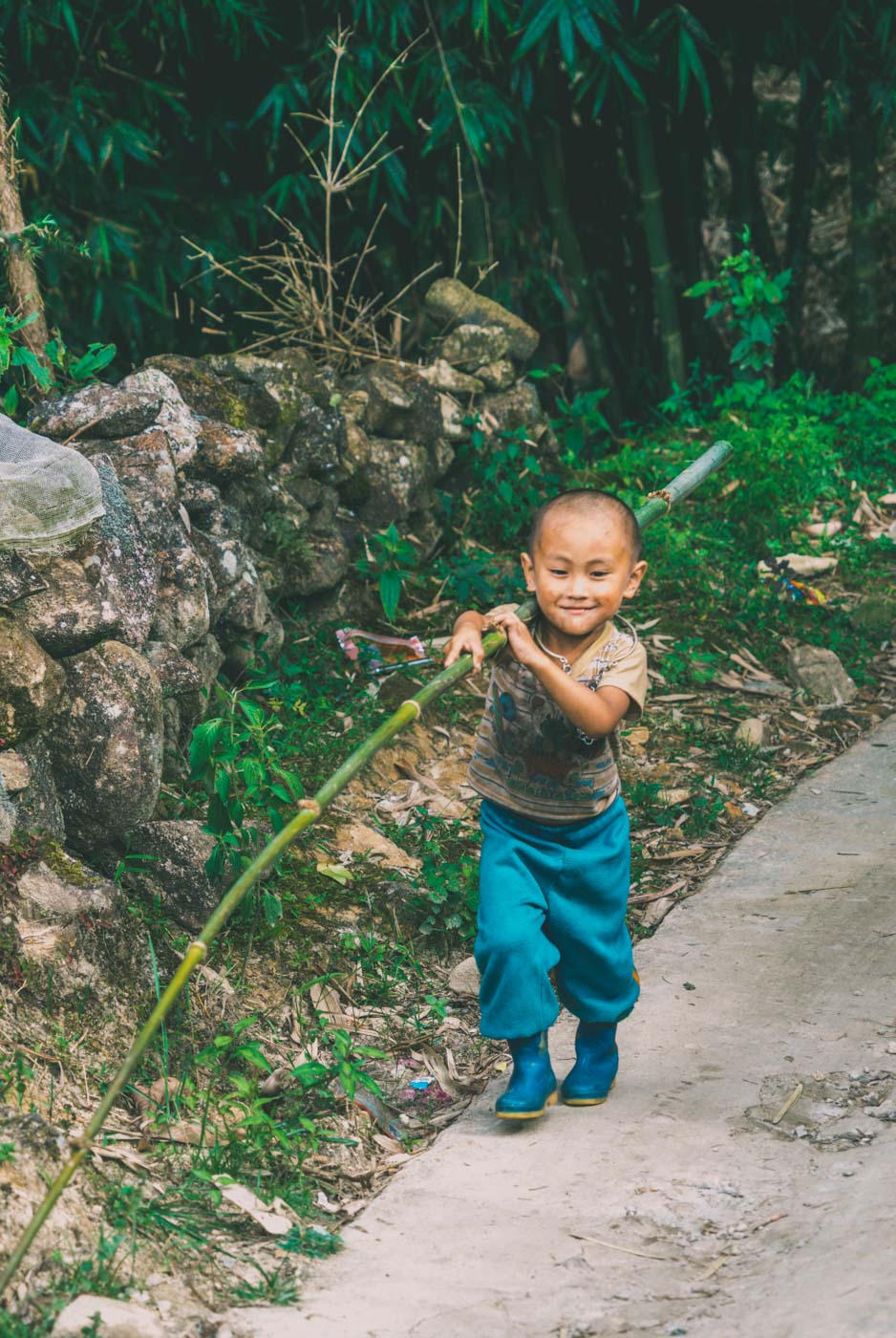
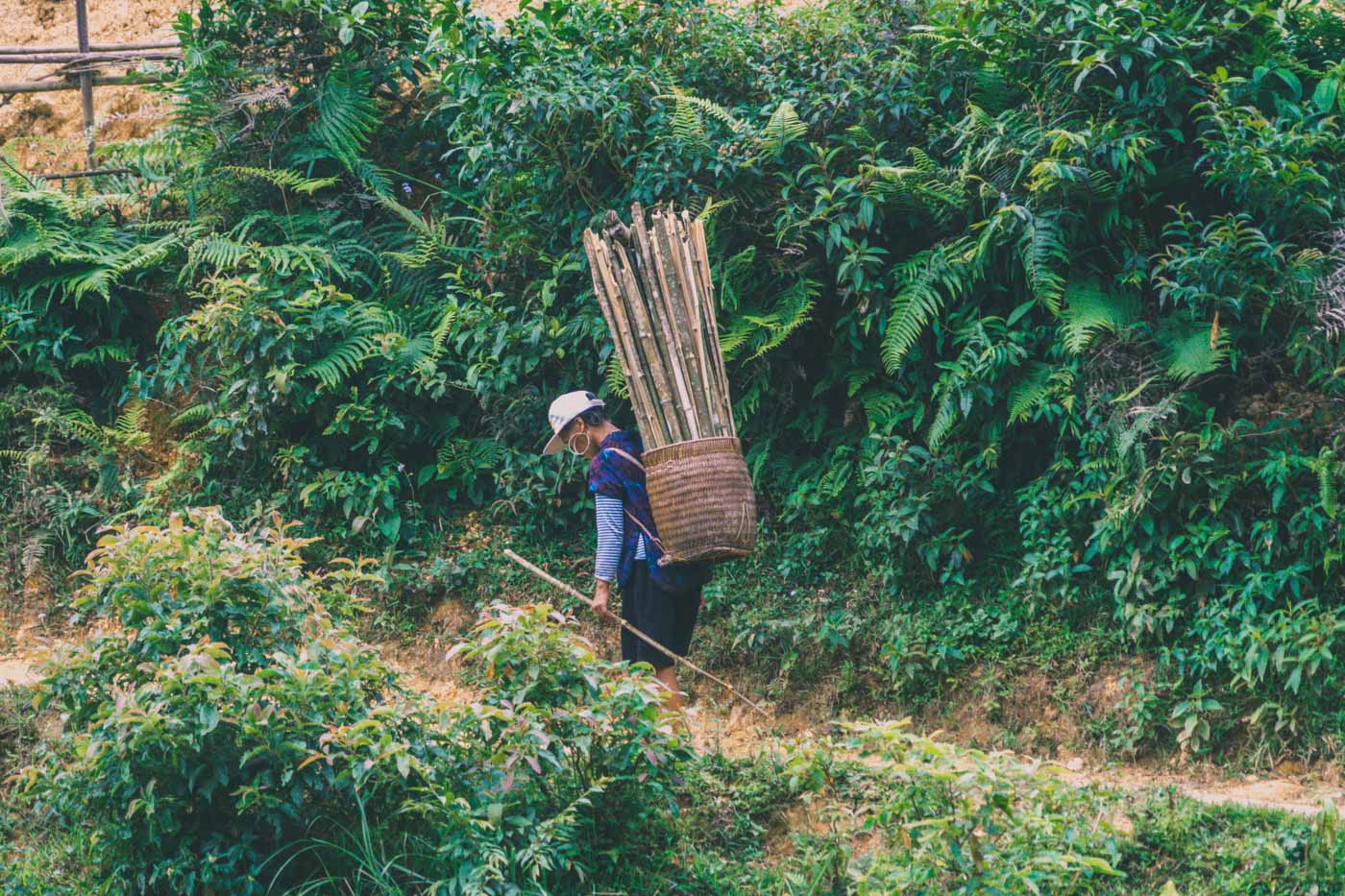
Check out our video for more highlights from our trek in Sapa…
Are 3 Days Enough?
3 days felt like the perfect amount of time to spend in Sapa, Vietnam. Even though we stayed in a different accommodation every night and spent a lot of time hiking, we didn’t feel rushed. Sapa trekking with Vanh gave us ample opportunity to learn about the region and about the community, and get a chance to interact with them in their traditional environments.
Vanh mentioned that if we had more time, we could have continued our trek further, passing through villages of other ethnic groups in the area, including the Dzao and the Tay. Her guided Sapa trekking options range from 2 days to 7 days in the region, offering something for every type of traveler visiting Sapa, Vietnam.
Even though three days was perfect for us, it seems as though you could spend weeks exploring all the things to do in Sapa. If you’re still wondering how many days in Sapa is enough, consider how explorative you’re feeling.
Other Things To Do In Sapa
A Sapa trekking tour is the best way to see this beautiful area, and there are other things to see if you have some time to explore independently. Here are a few spots you can visit in the Sapa area.
Cat Cat Village
Located about 2 km from Sapa town, Cat Cat Village is full of natural beauty and cultural traditions. Nestled between terraced rice fields, the village has its own waterfall and is famous for its weaving traditions. You can easily spend a couple of hours wandering through the town, browsing through woven handicrafts, watching the giant water wheels pound rice, and sampling local wine.
Visit The Sapa Market
One of the best ways to learn about a culture is to visit a local market. The Sapa Market is a great place to pick up some local produce, browse through the traditional textiles made and sold by H’Mong women, and people watch.
Visit The Lan Rung Brocade Craft Village
Located at the centre of Sapa town, this cultural village offers opportunities to learn and participate in activities using traditional methods of weaving and dyeing beautiful brocade. There are outdoor greenspaces to explore as well, such as a stone tunnel lined with colourful murals and a flower garden.
Essential Travel Info For Sapa Vietnam
Getting In
An overnight train is the easiest way of getting from Hanoi to Sapa, also written as Sa Pa. The train runs from Hanoi to Lao Cai. Tickets cost just $17 and can be purchased online. You’ll get an email confirmation, which you can use to board the train (no printed tickets needed).
The train was comfortable, clean, and a great eco-friendly way to get from Hanoi to Lao Cai. From the Lao Cai train station, minivans were available to take travelers to Sapa town.

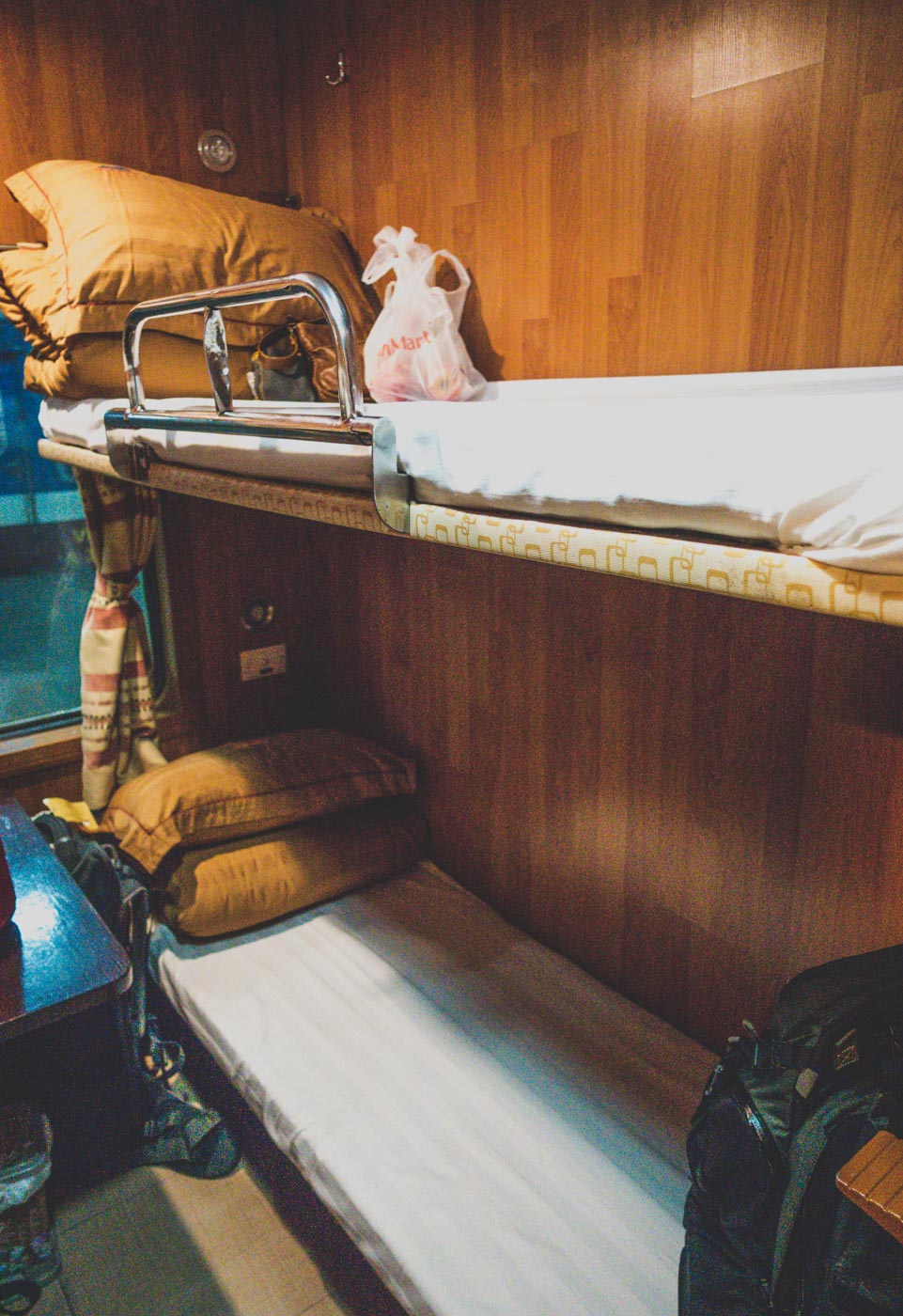
Where To Stay In Sapa, Vietnam
There are lots of guesthouse options in Sapa and while none really follow the eco-hotel principles, many are locally owned. We stayed at the Heart of Sapa hotel, a small guesthouse on the southern side of town, and absolutely loved our stay. Our host, Ha, was instrumental in helping us plan out things to do in Sapa.
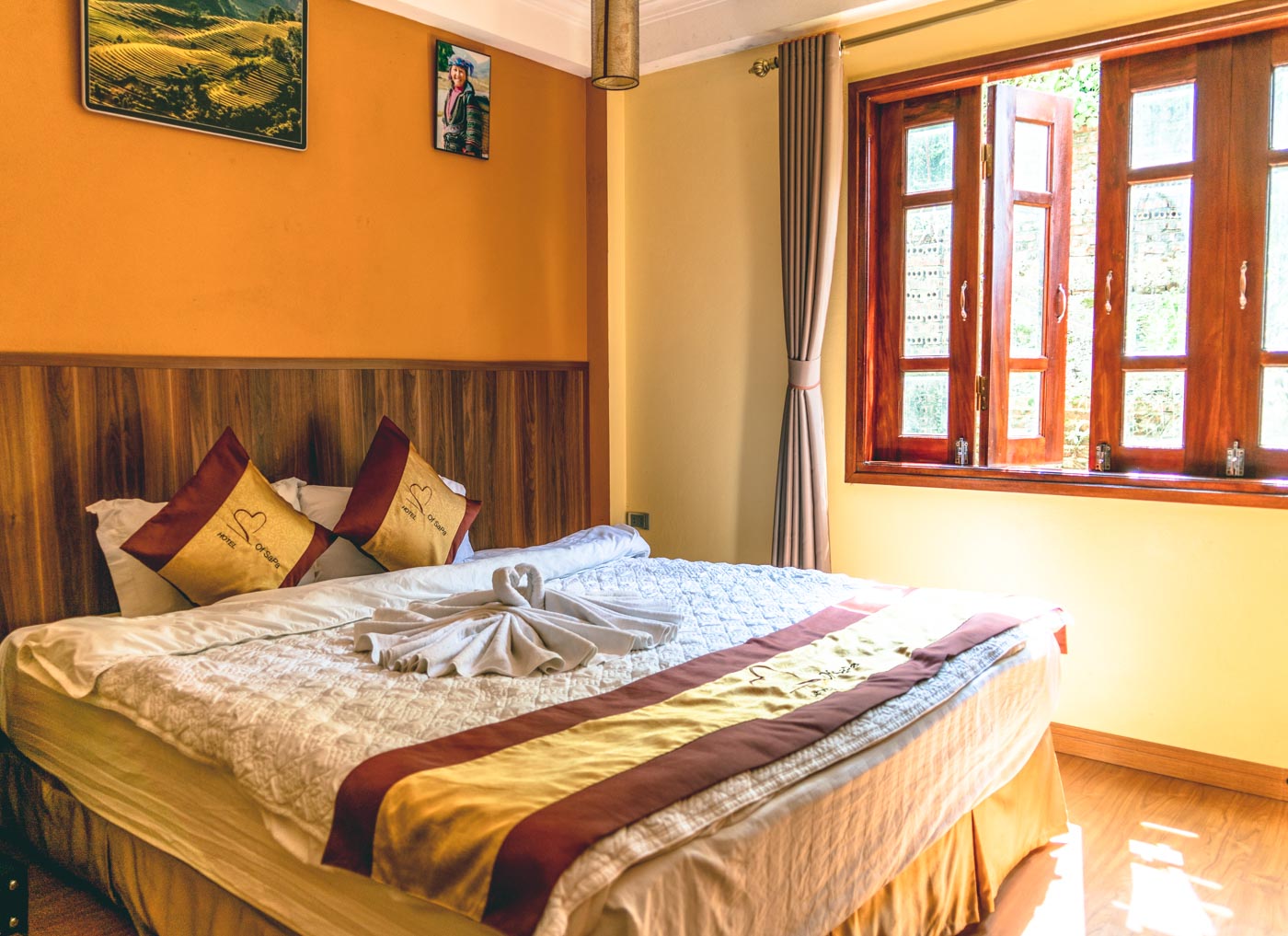
READ NEXT: The Best Vietnamese Dishes to try while in Vietnam
Organizing A Sapa Trekking Tour
Lots of agencies and providers offer planned Sapa trekking itineraries. Many offer trips from Hanoi, which includes a train ticket in the price, and many organize trekking tours in town, such as this two day Sapa trekking tour.
No matter who you choose to trek with when you visit Sapa, ensure that your guide comes from a local community (as for many of them, guiding treks is the only source of income) and that the cut of the profits they receive from the company is fair and reasonable. We heard that Sapa Sisters is a good option.
We bypassed a company and organized our Sapa trekking directly with a freelance guide, ensuring that all of our money goes straight into her pocket and into the pockets of her family who hosted us in Ta Van overnight. Vanh mentioned that she sometimes freelances for other companies that offer Sapa tours, but she always prefers independent treks, as this allows her to earn double the amount that she would when guiding for another company.

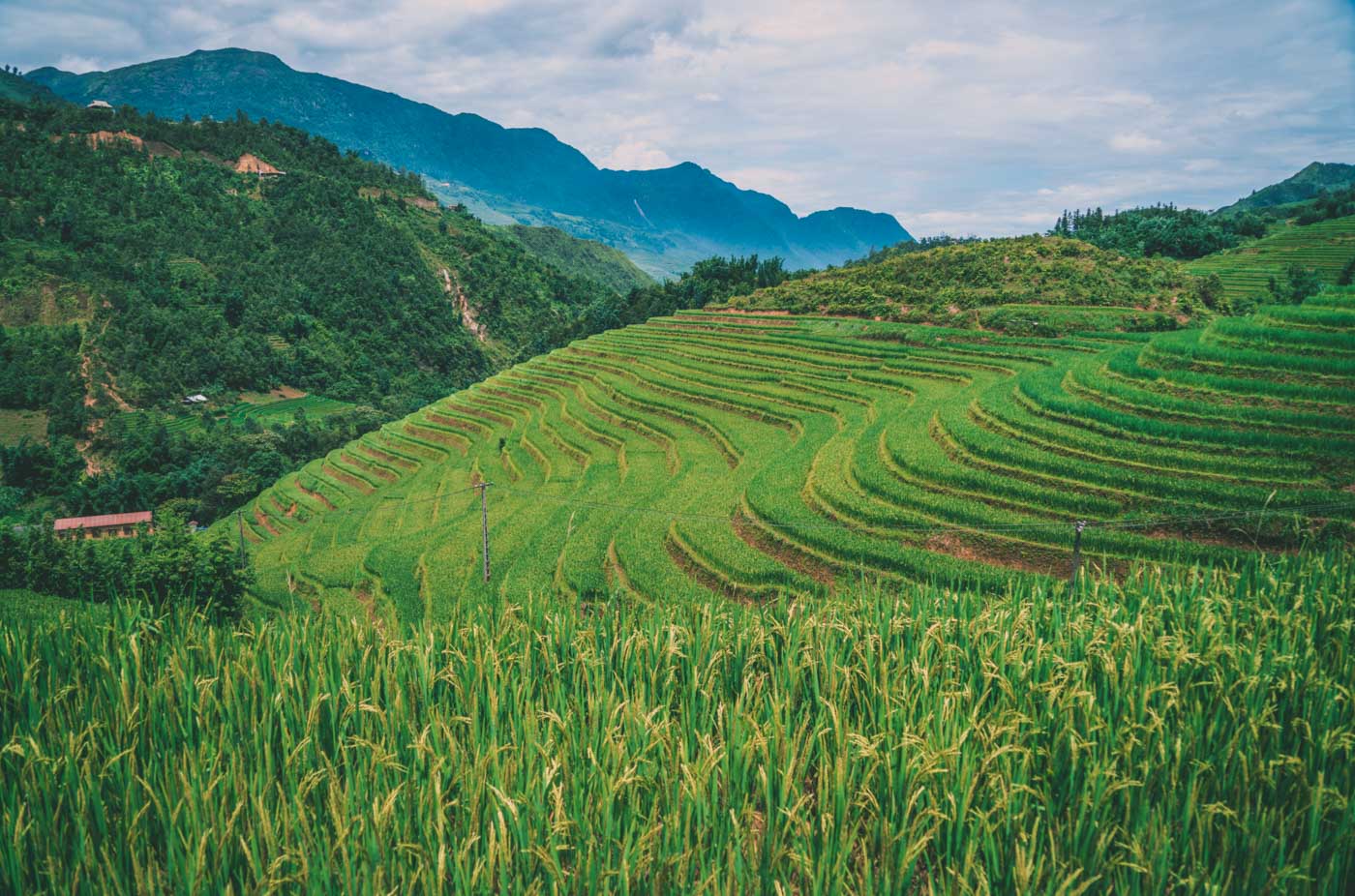
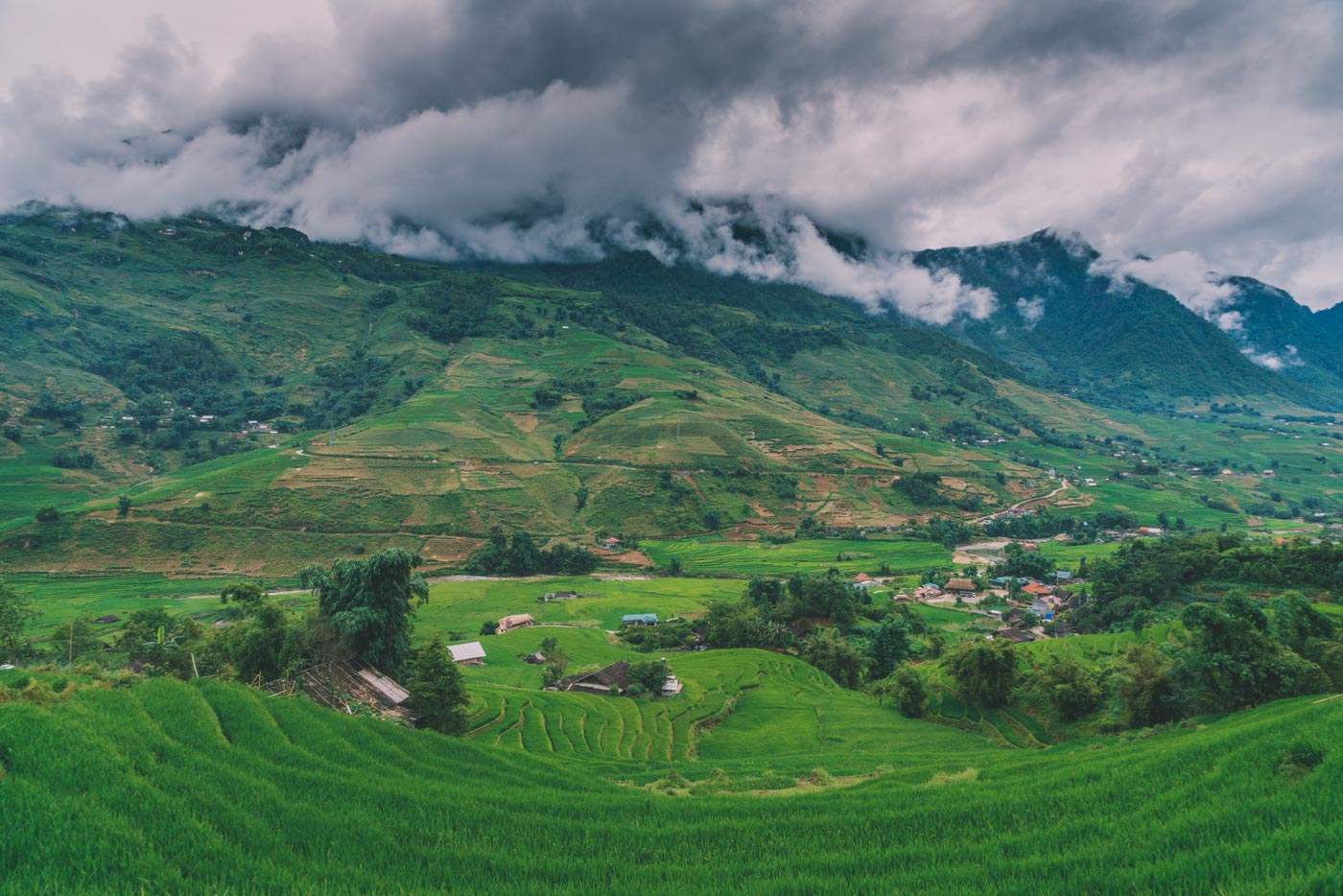


Hi Oksana & Max
I’m planning a trip to Sapa this April. Though a Vietnamese, i’m interested in having a local guide for my trekking. Through your post, it can be seen that your guide had brought you to trails with very great view. Would it be ok if you can share with me her contact details (email or phone number)?
Thanks a lot.
Hi Beatrice, unfortunately, we do not have our guide’s contact details, as we organized this trip directly through our guesthouse that helped us with all the arrangements. If you haven’t booked a place to stay yet, we recommend Heart of Sapa hotel (link in the post). If you would like to do a trek, they will gladly help you organize it.
Hi Oksana & Max, we’re going to Sapa in two weeks, we want to spend three days there as well and want to organize a tour there. Is it correct that you organised the trek just the day before after you arrived?
We want to book a hotel for one night, then go for a trek and then probably spend one more night in Sapa before going back to Hanoi.
Thank you for advice 🙂
Hi Jana,
Yes, we organized the trek the day before. We arrived on Day 1, stayed the night at the hotel and the following morning departed on an overnight tour. When we came back, we grabbed our bags from the hotel (where we left them while we were on the tour) and hopped on the overnight train back to Hanoi. It worked out really well. If you haven’t booked a hotel yet, we highly recommend Heart of Sapa Hotel (which we linked to in the post). They are super helpful with organizing tours and making your trip to Sapa absolutely great!
Hi Oksana & Max,
We want to spend 3 days in sapa just like you guys did. Just some questions :
1) How many days did you spend in the Heart of Sapa Hotel (btw it looks very nice)?
2) What did you do with your luggage during the trekking?
Thanks you for your info
Justin
Hi Justin,
We spent just 1 night at Heart of Sapa. We arrived super early in the morning (on the overnight train), then spent the first day and night at the Heart of Sapa, went on the trek the following morning, coming back late in the afternoon the following day and that evening hopped on the overnight train back to Hanoi.
We left our luggage at Heart of Sapa and only took small day bags with us on our hike.
Hope that helps!
Hey there! Very helpful and interesting text. The most interesting thing about it were the pictures! Great photographs and I wondered what do you have as your camera equipment?
Thanks in advance, Matthias
Hi Matthias, you can find the guide to our photography gear here: https://drinkteatravel.com/photography-gear-guide/
HI Oksana and Max,
thanks for the information! I am headed to that region of the world next week and have been trying to organize my itinerary… I was wondering if you would be willing to share what your trek cost with the guide?
thanks
Aly
Hello,
I’m planning to visit Sapa soon, but not sure which month is best. In which month did you make your visit there?
Thanks,
Viv
We visited in August and despite the fact that it was not high season, we had really nice weather and enjoyed our trip.
Hello! Thanks for sharing your experience in Sapa. I will be heading there next month and am looking for trekking tours in Sapa. May I know how much the tour cost? Thank you!
The tour was $52/person and it included food and a local homestay for 1 night. Enjoy your visit!
Hello guys! Thanks for this entry. I am planning to go Sapa. May I know which month did you go? The rice paddies are gorgeously green! I want to go at this month of the year.
We were there at the end of July. Beautiful time to visit, but do pack some rain gear as the weather can be a bit wet at that time of the year.
Hi! It sounds like you were able to organize the trekking once you arrived through your hotel, the Heart of Sapa. I was curious about renting the motorcycles for you first day going to the waterfalls. Did you organize that beforehand with your hotel? Or do so upon your arrival?
Hi Anne,
We organized everything through the hotel upon arrival. Motorcycles are usually easy to find, so you can have them brought to your hotel as you need them.
Stunning photos of Sapa. The countryside is really beautiful. I can’t wait to visit and maybe do a trek as well. This is a very informative article. Thanks.
Hi guys!
Your photos look amazing and your article is really informative. I will be heading to Sapa in June this year and I was just wondering how much did your 2-day trekking tour cost (including the homestay). Thank you so much for your help! 🙂
The tour was $52/person and it included food and a local homestay for 1 night. The prices in Sapa are very affordable 🙂